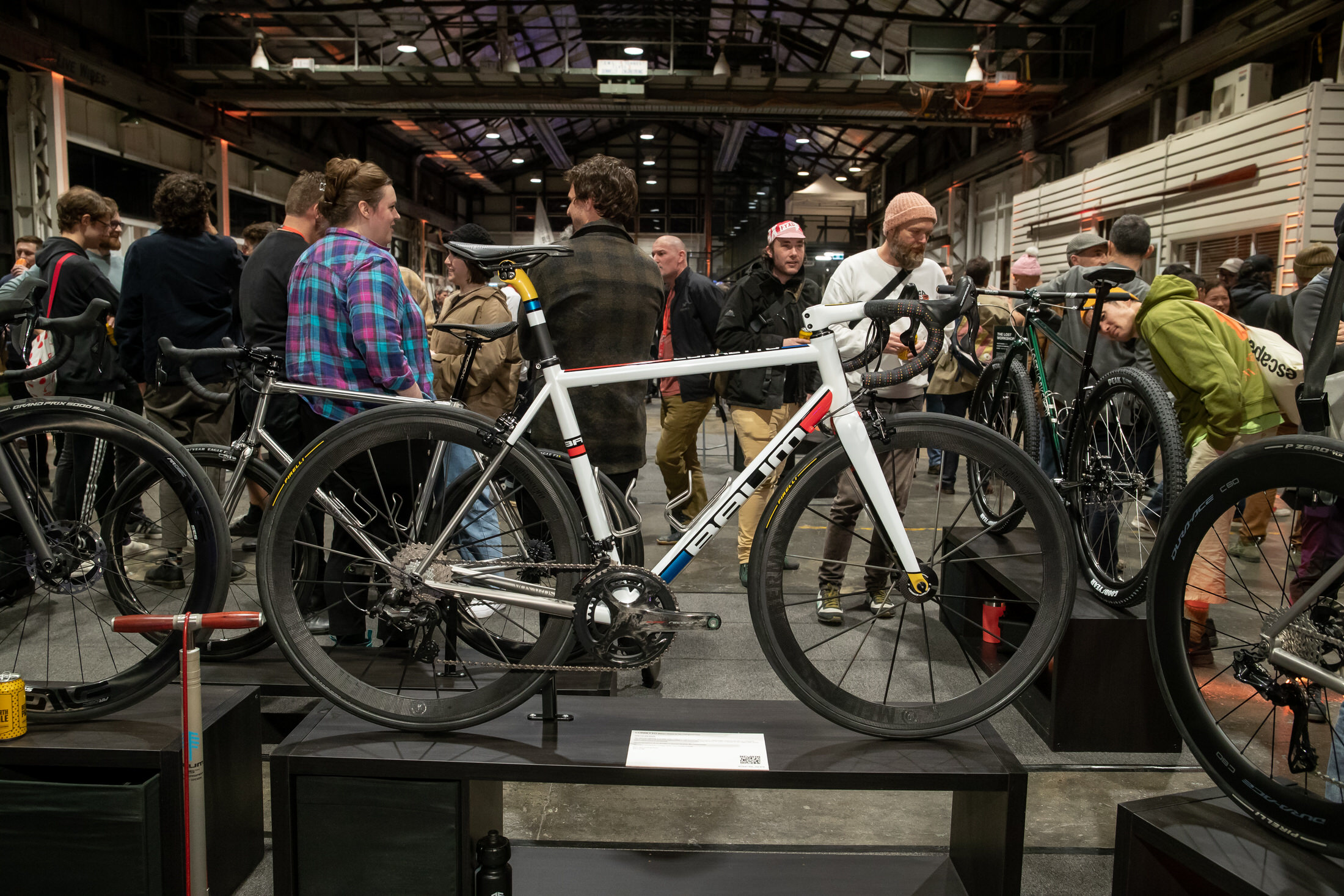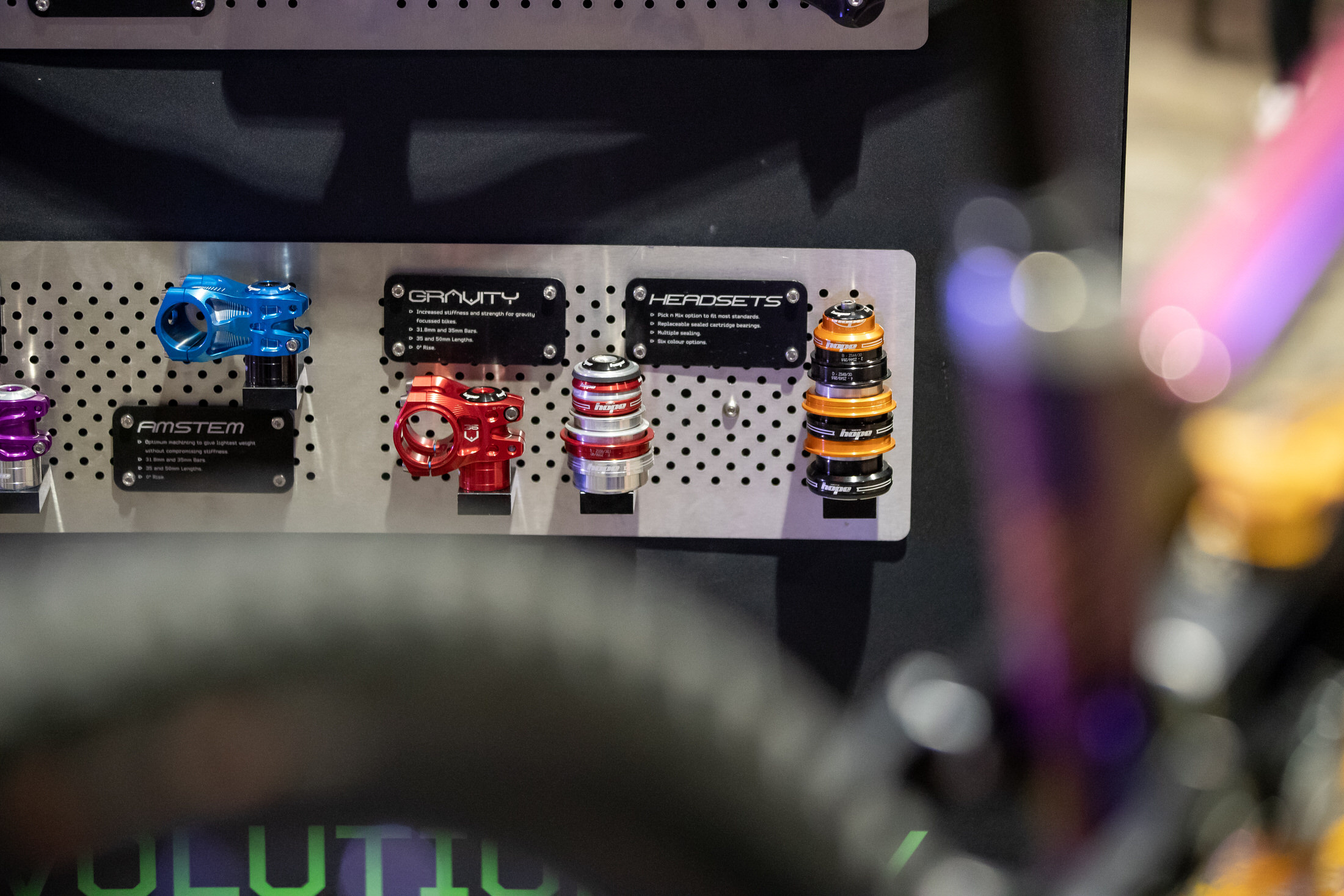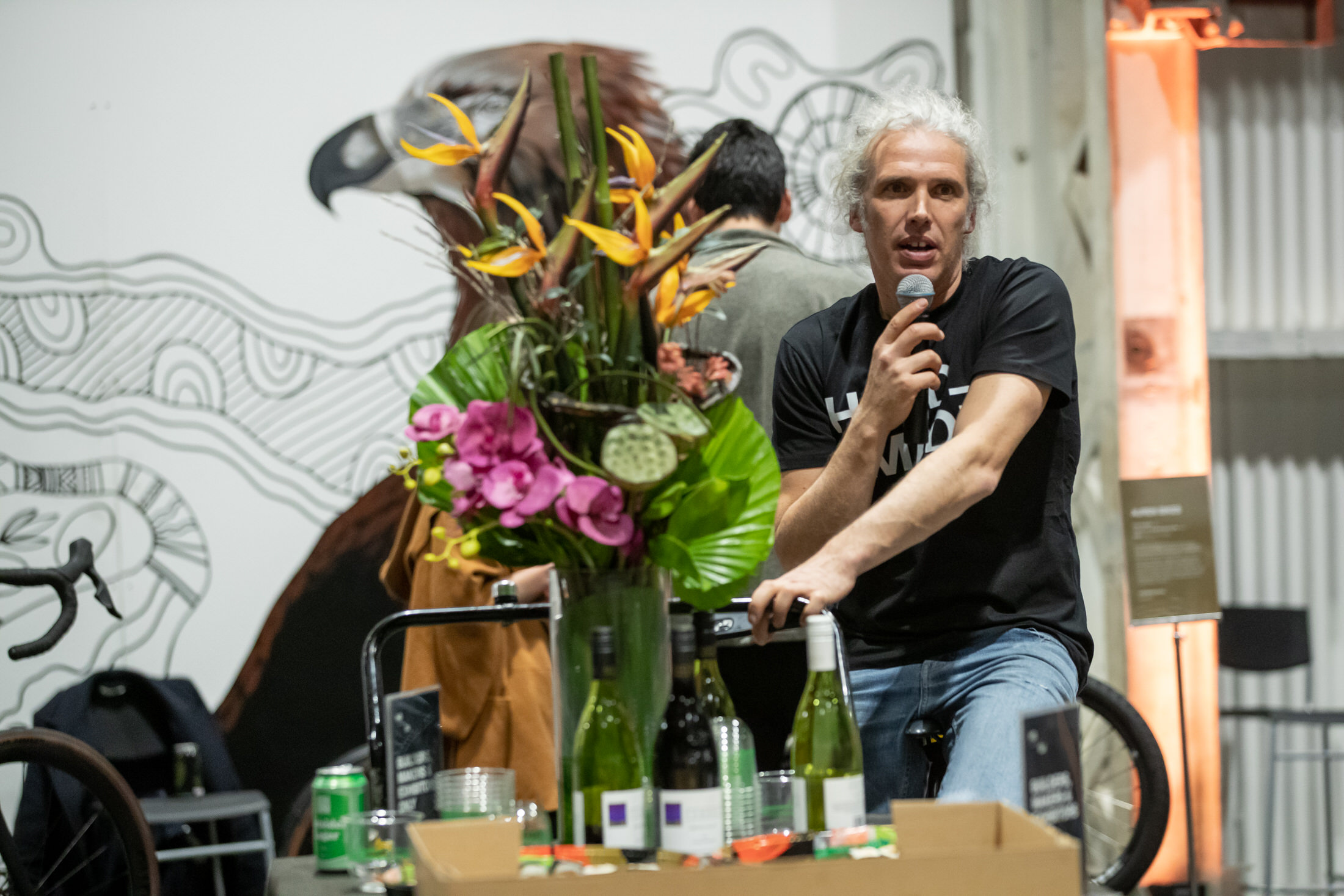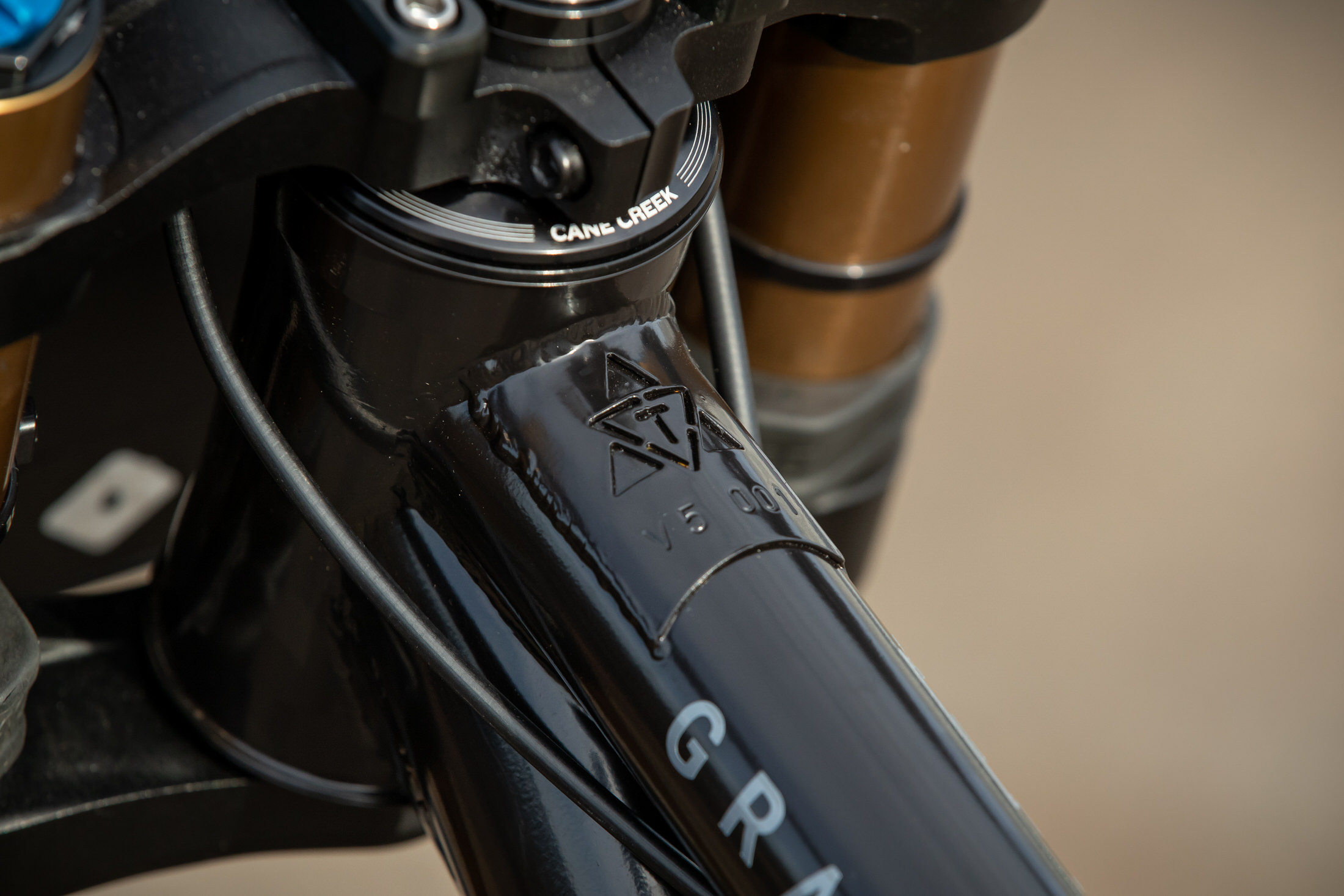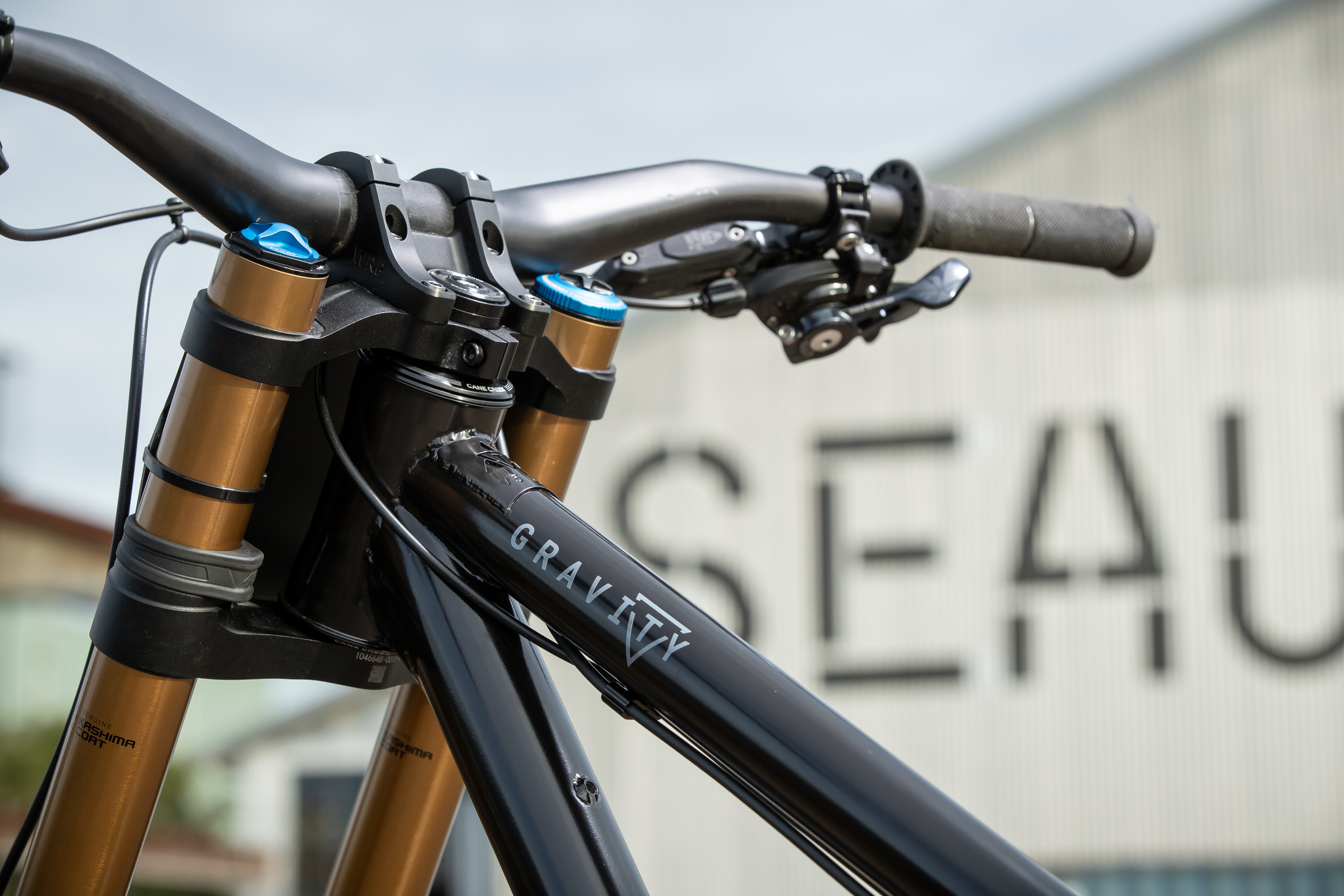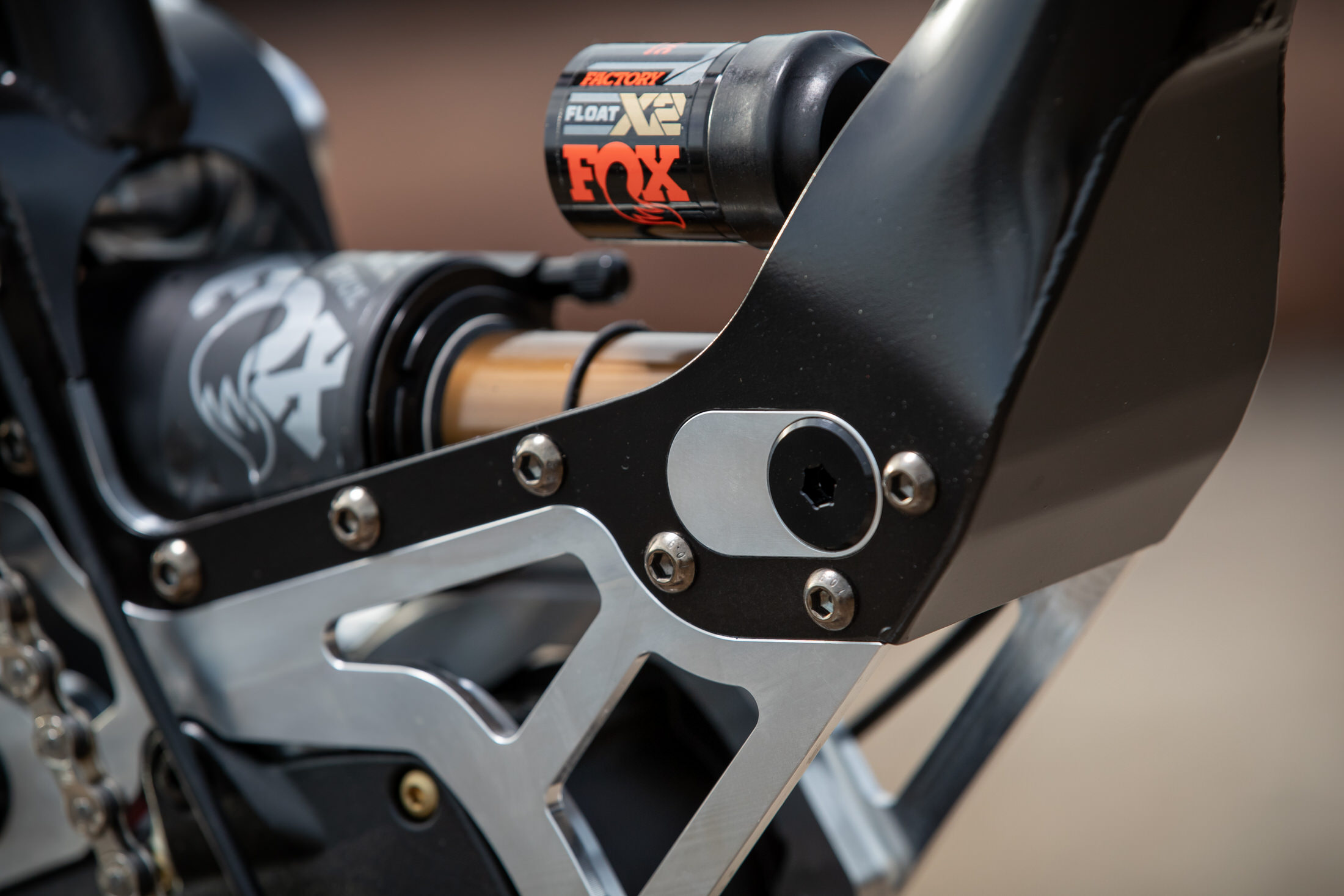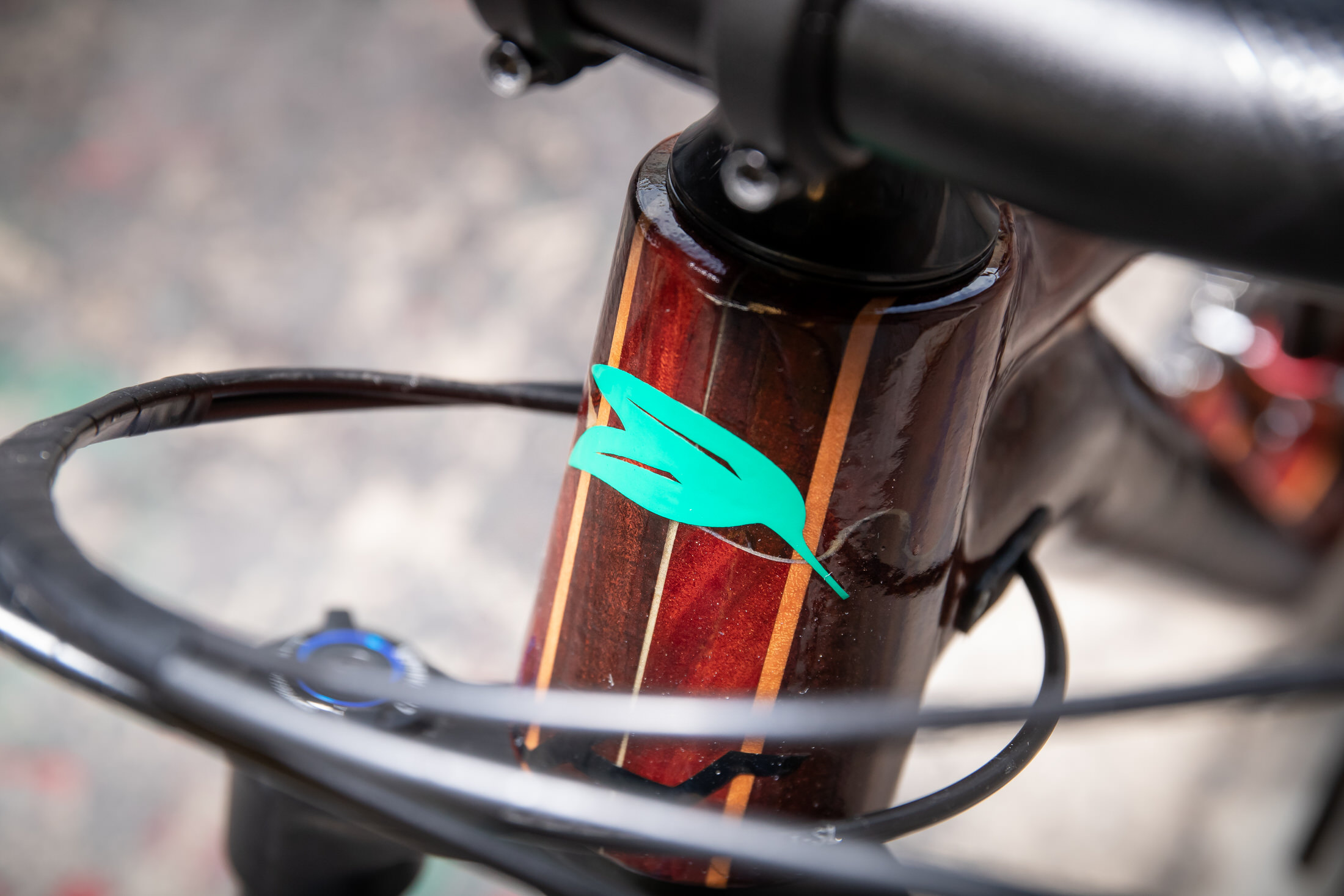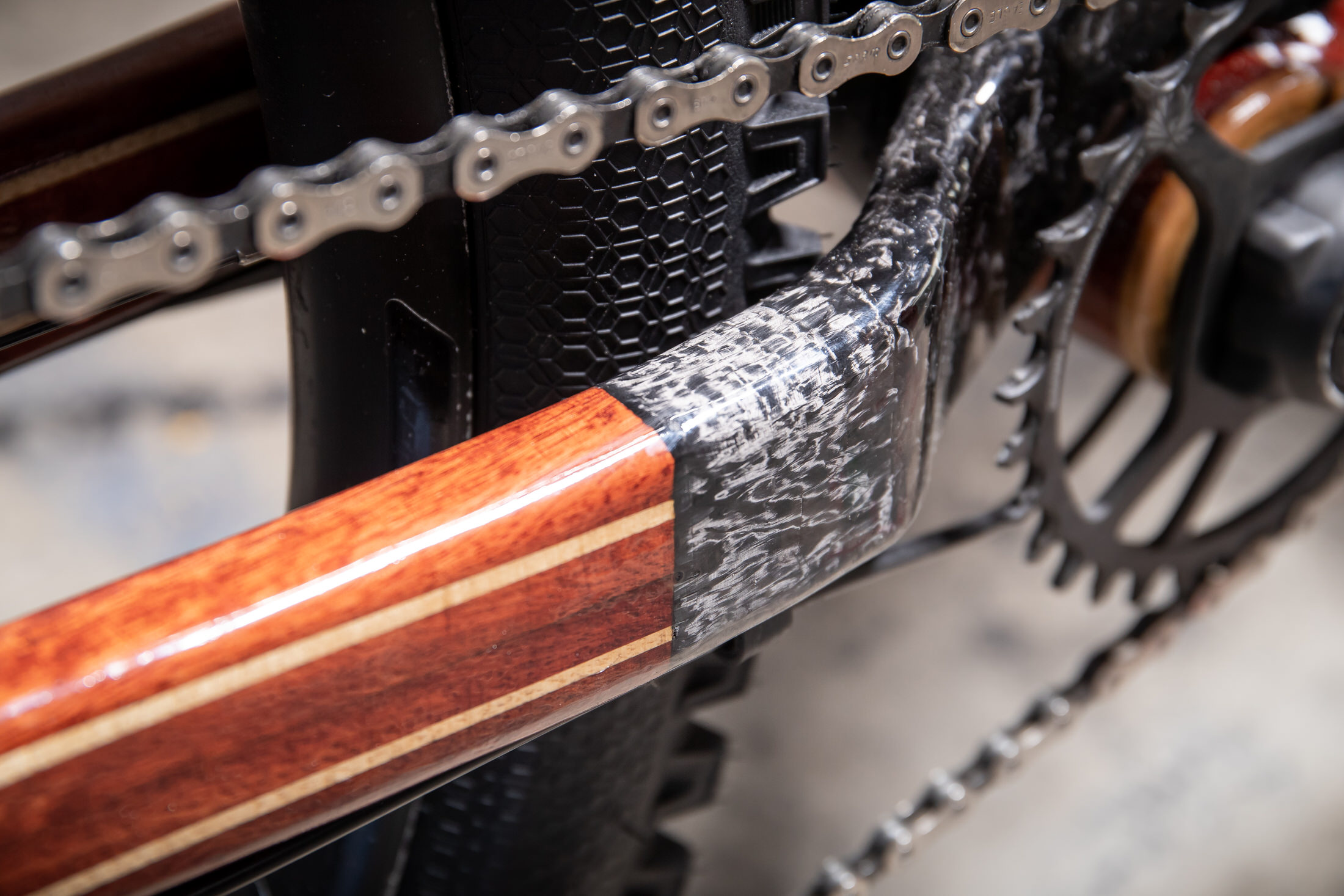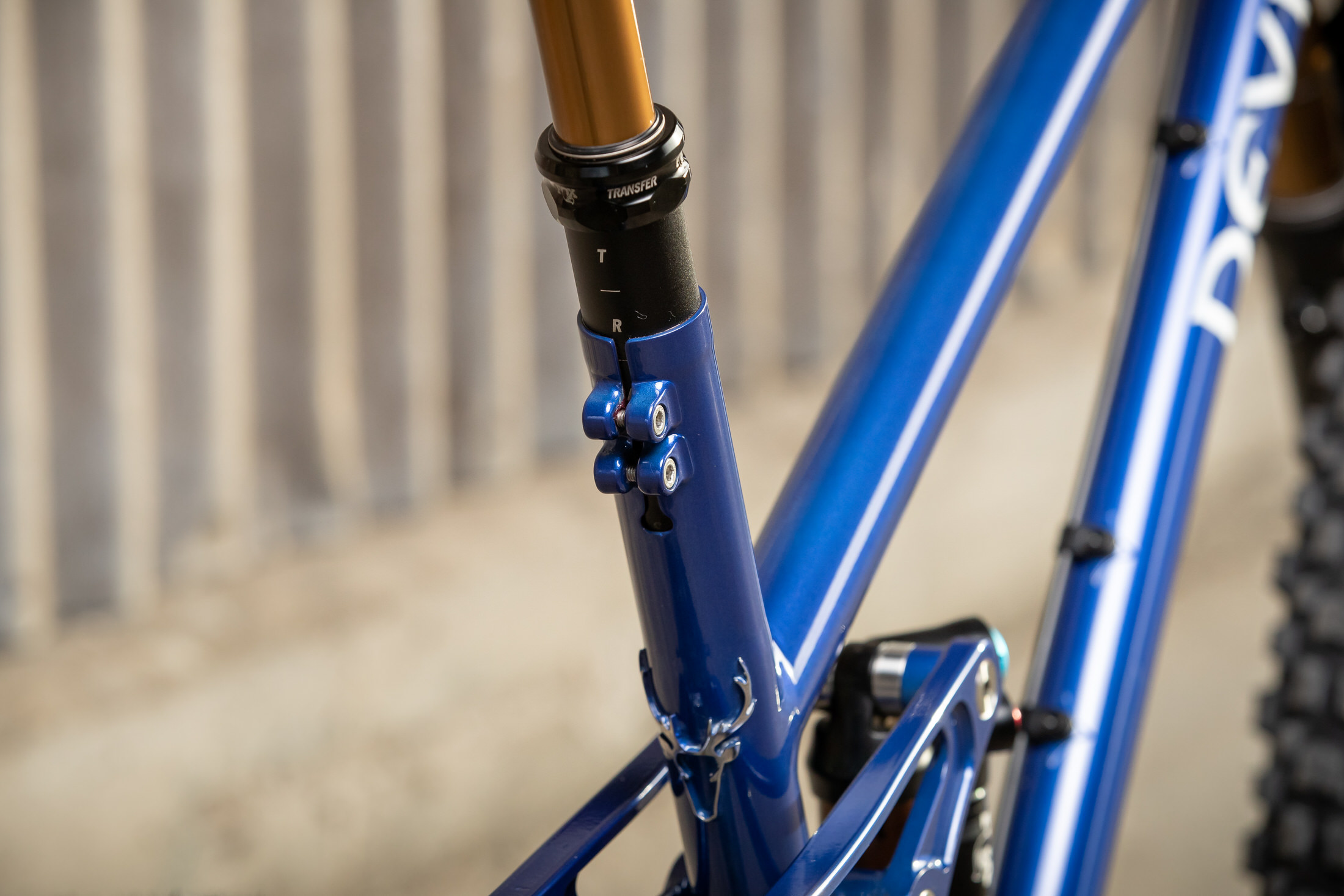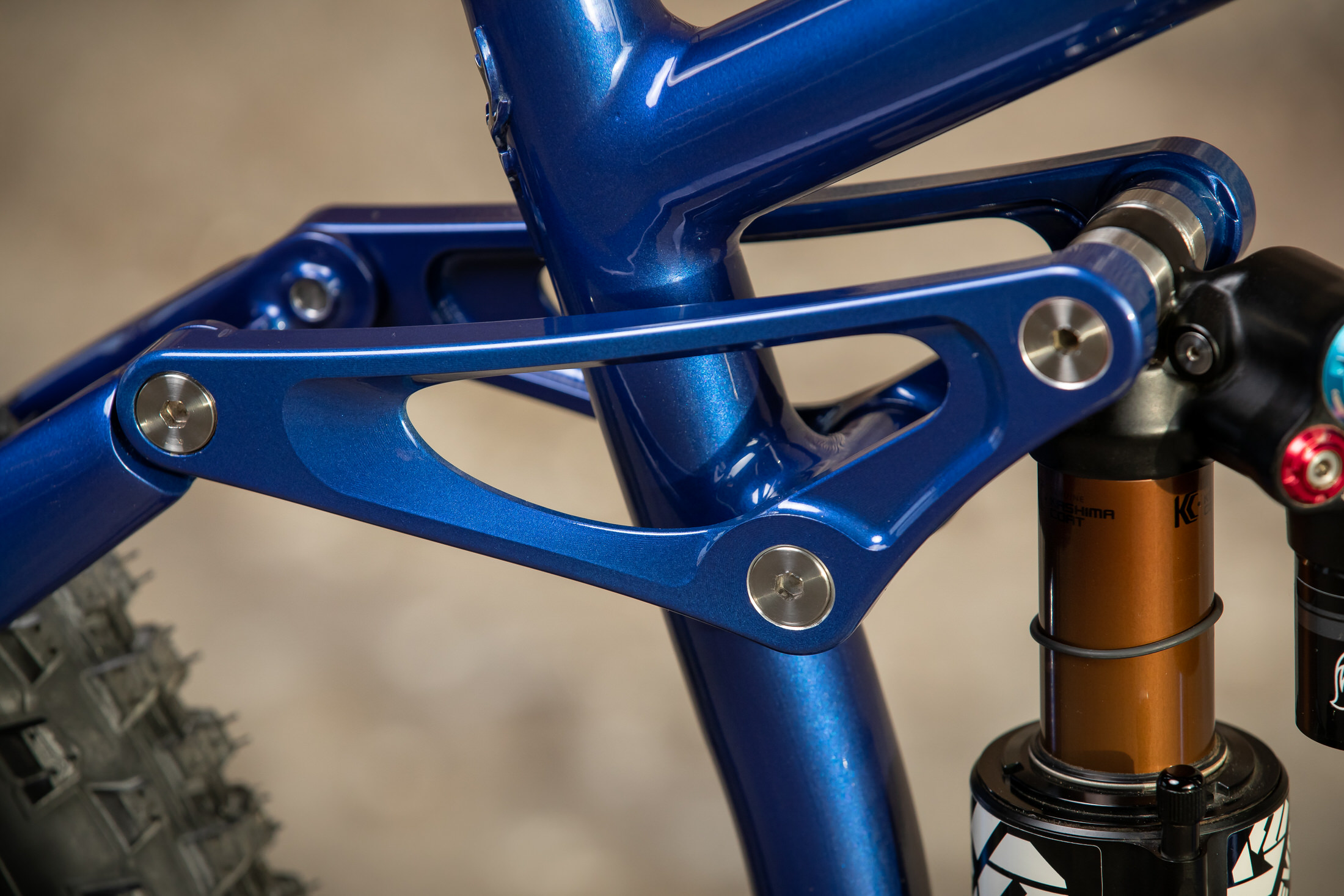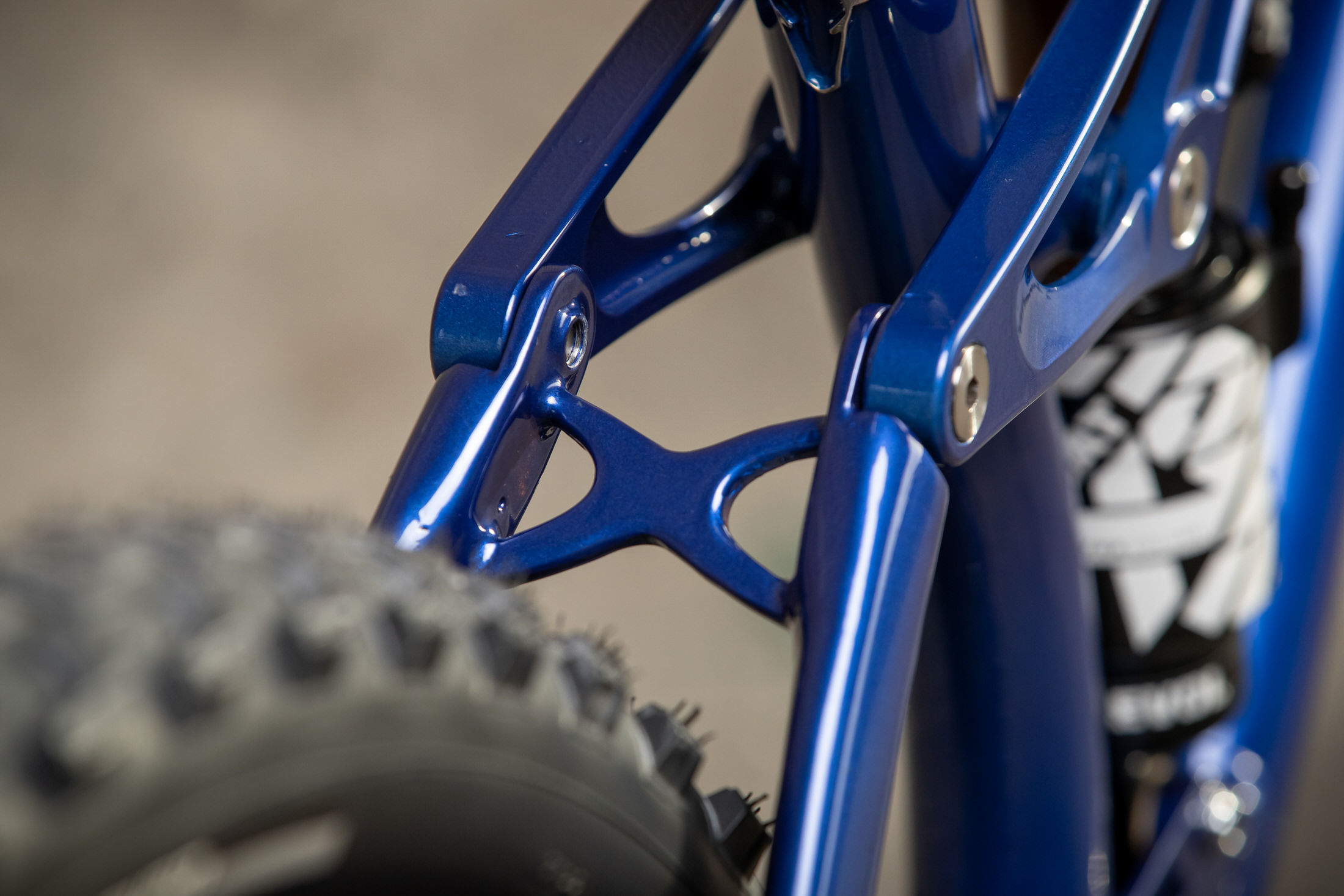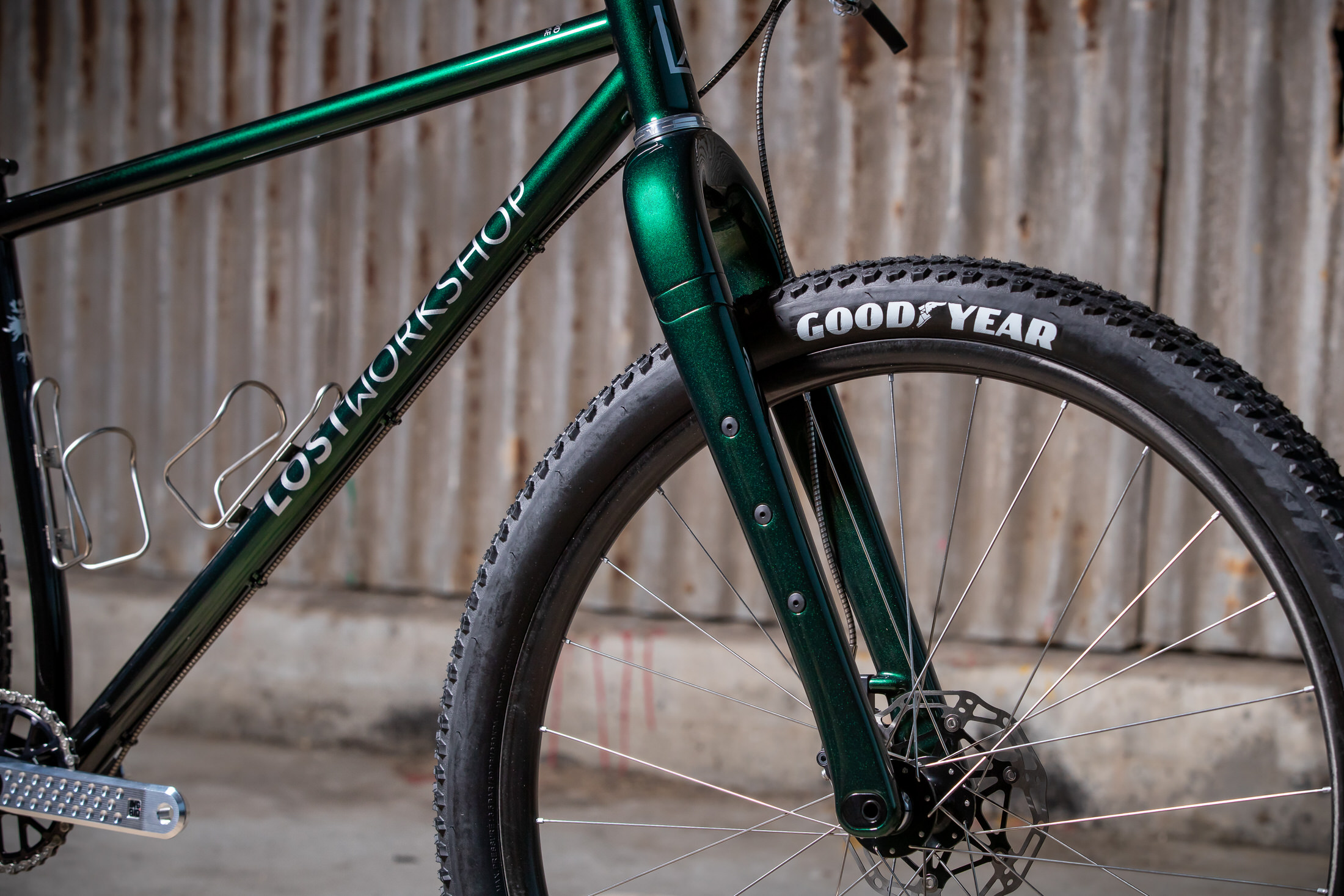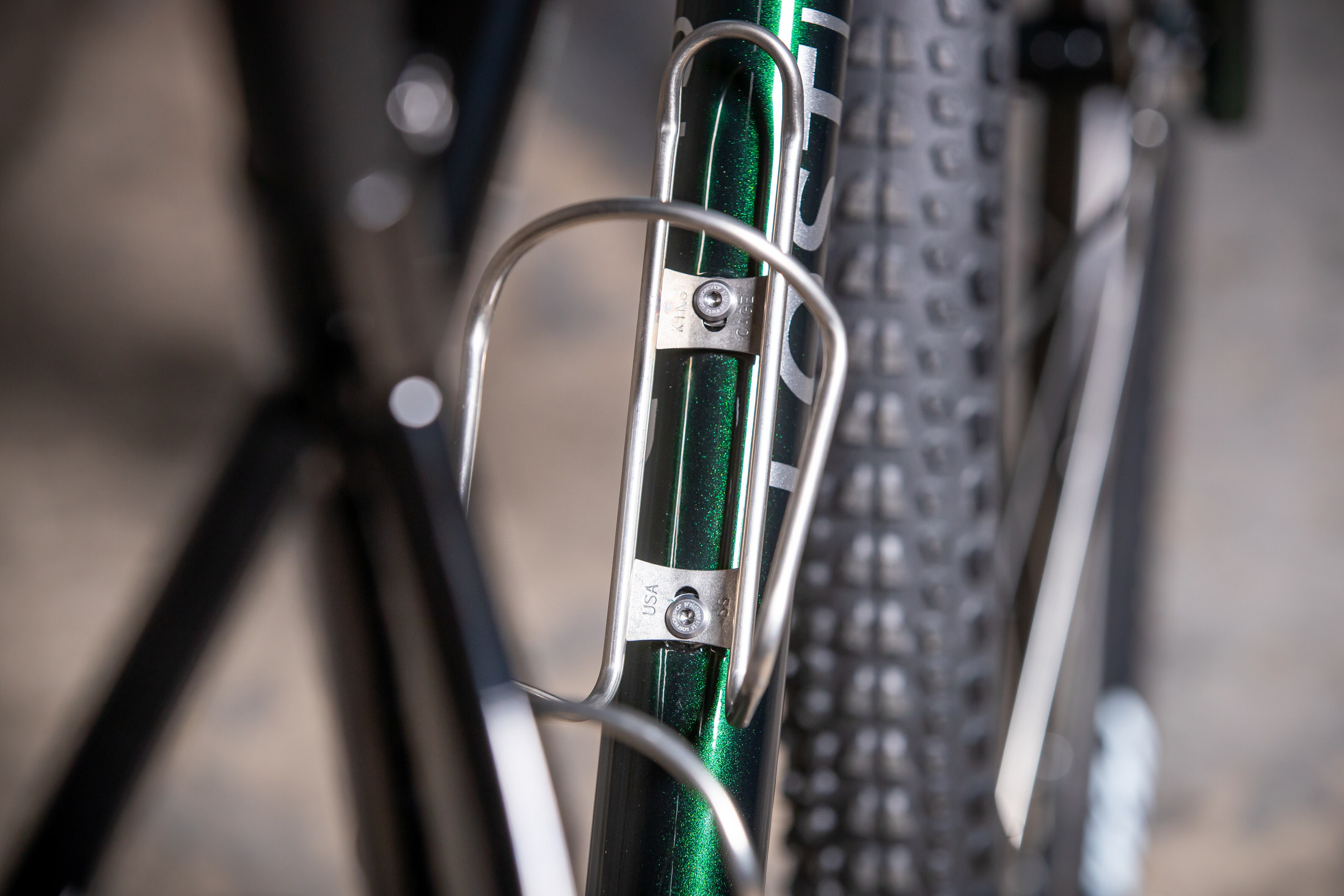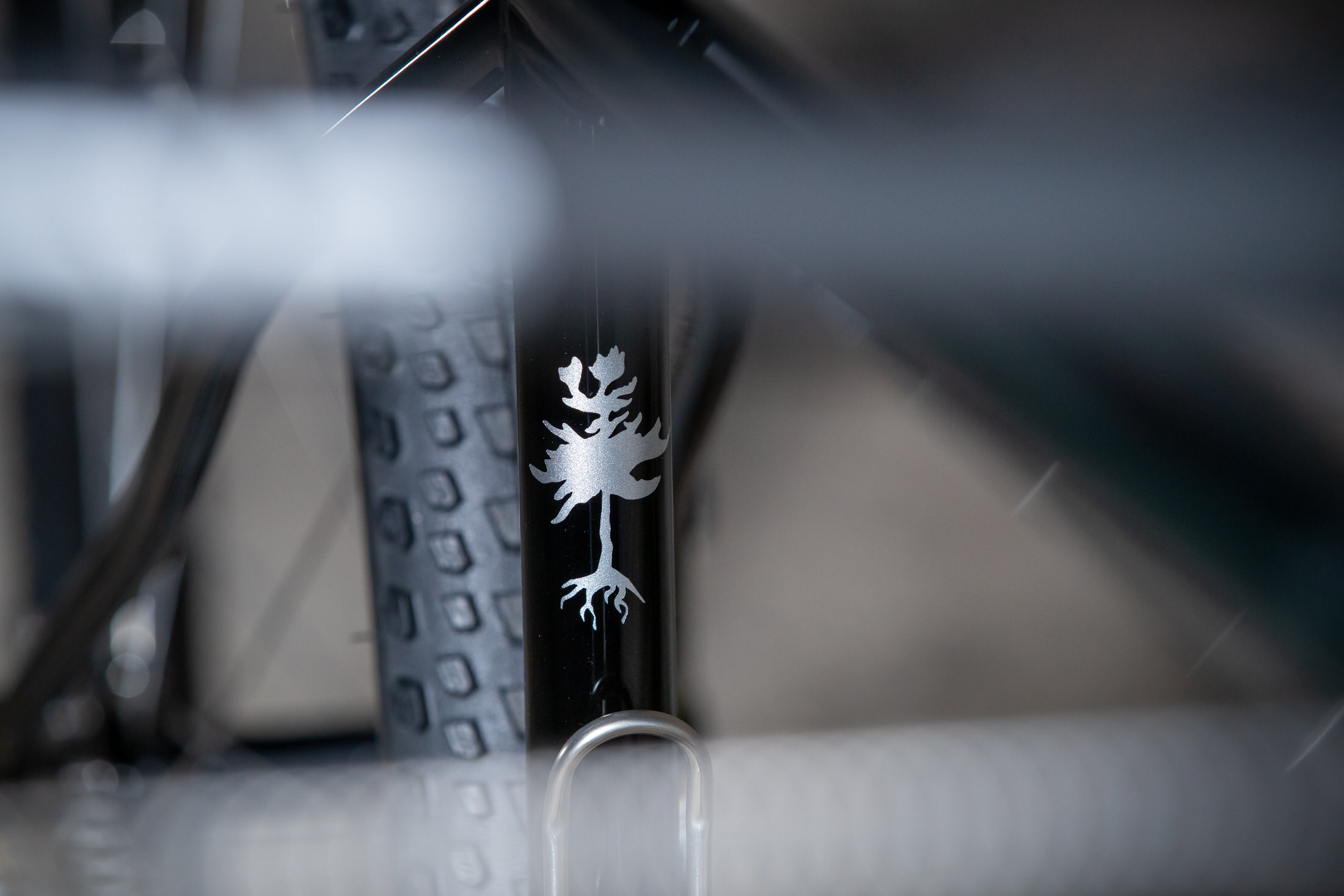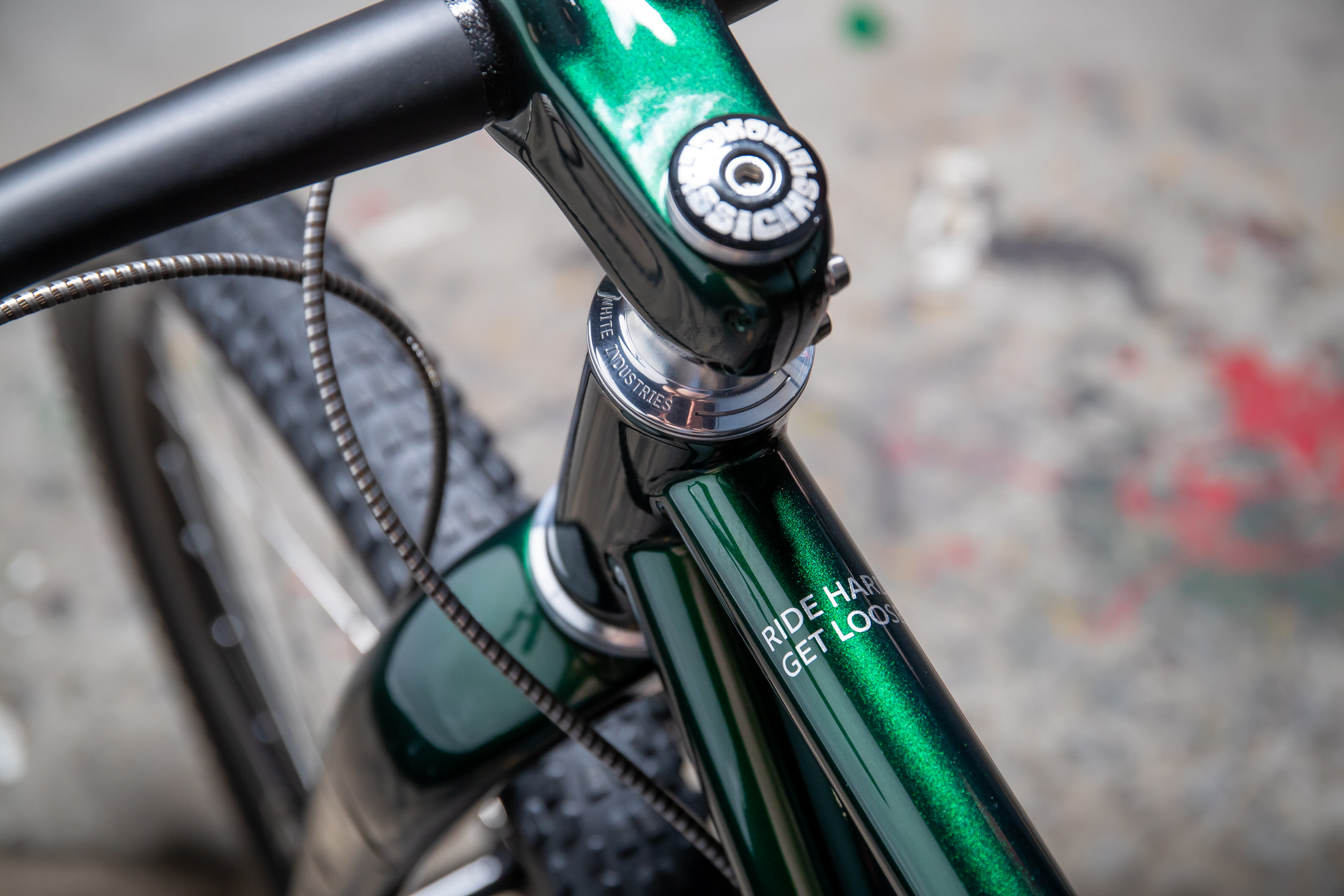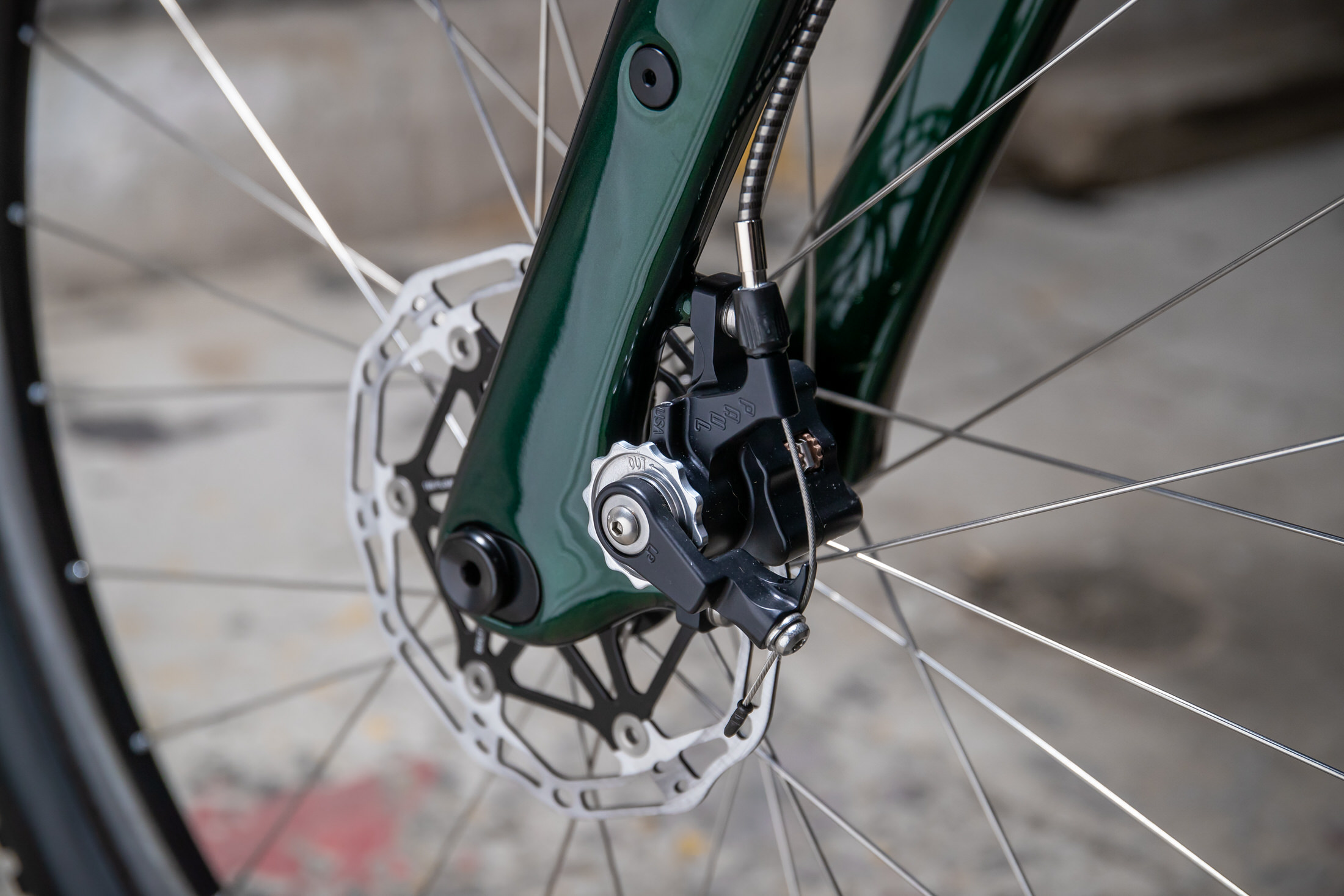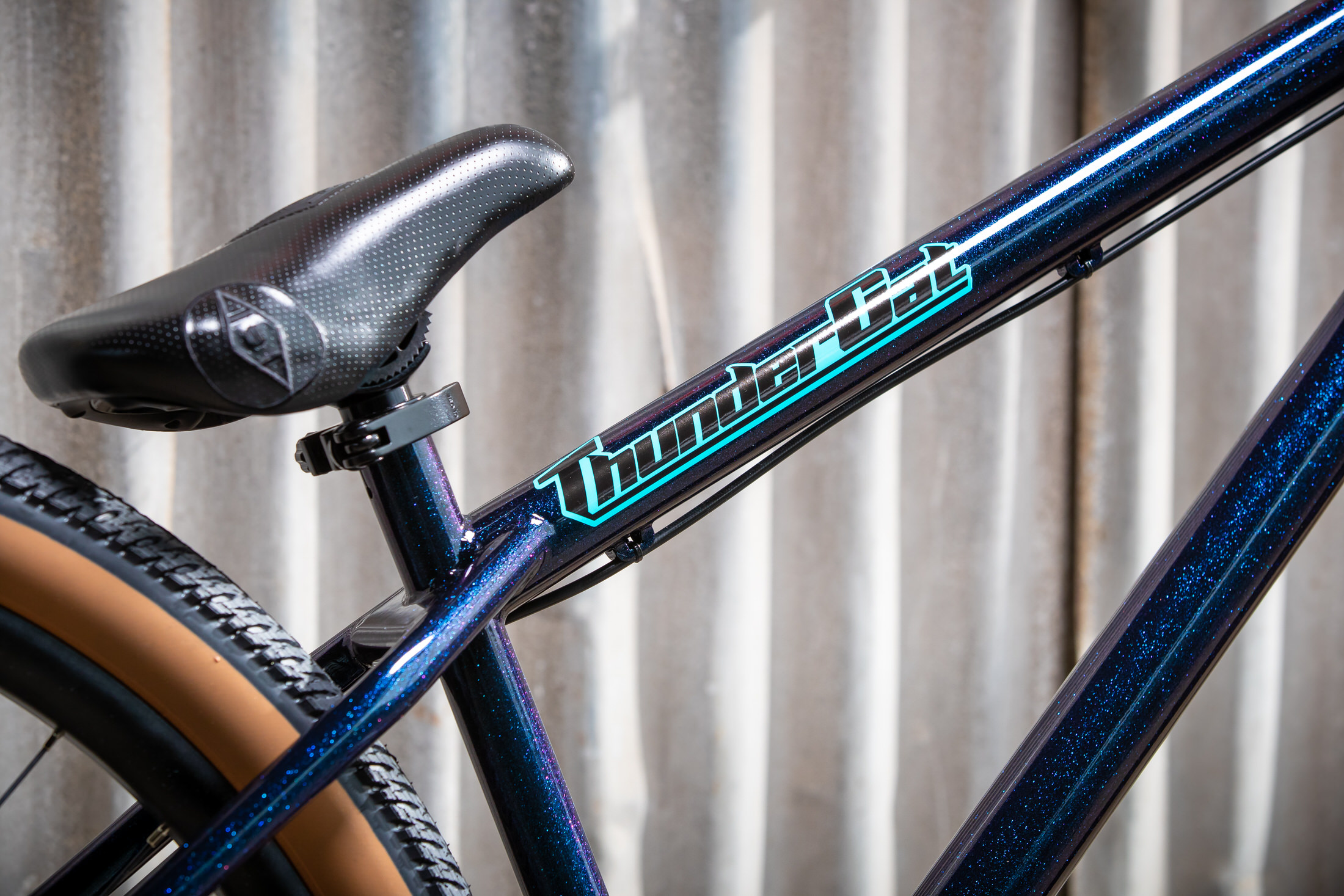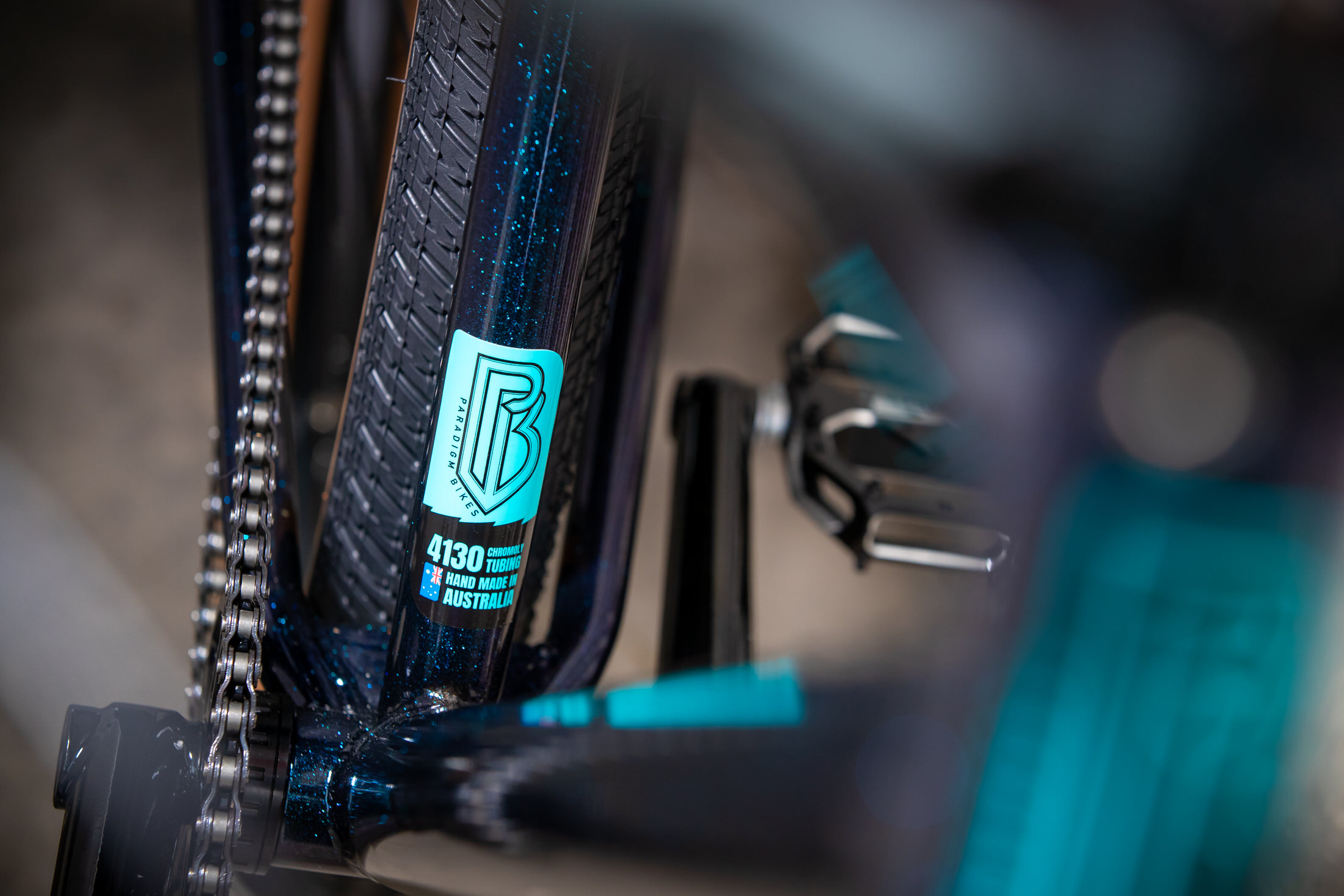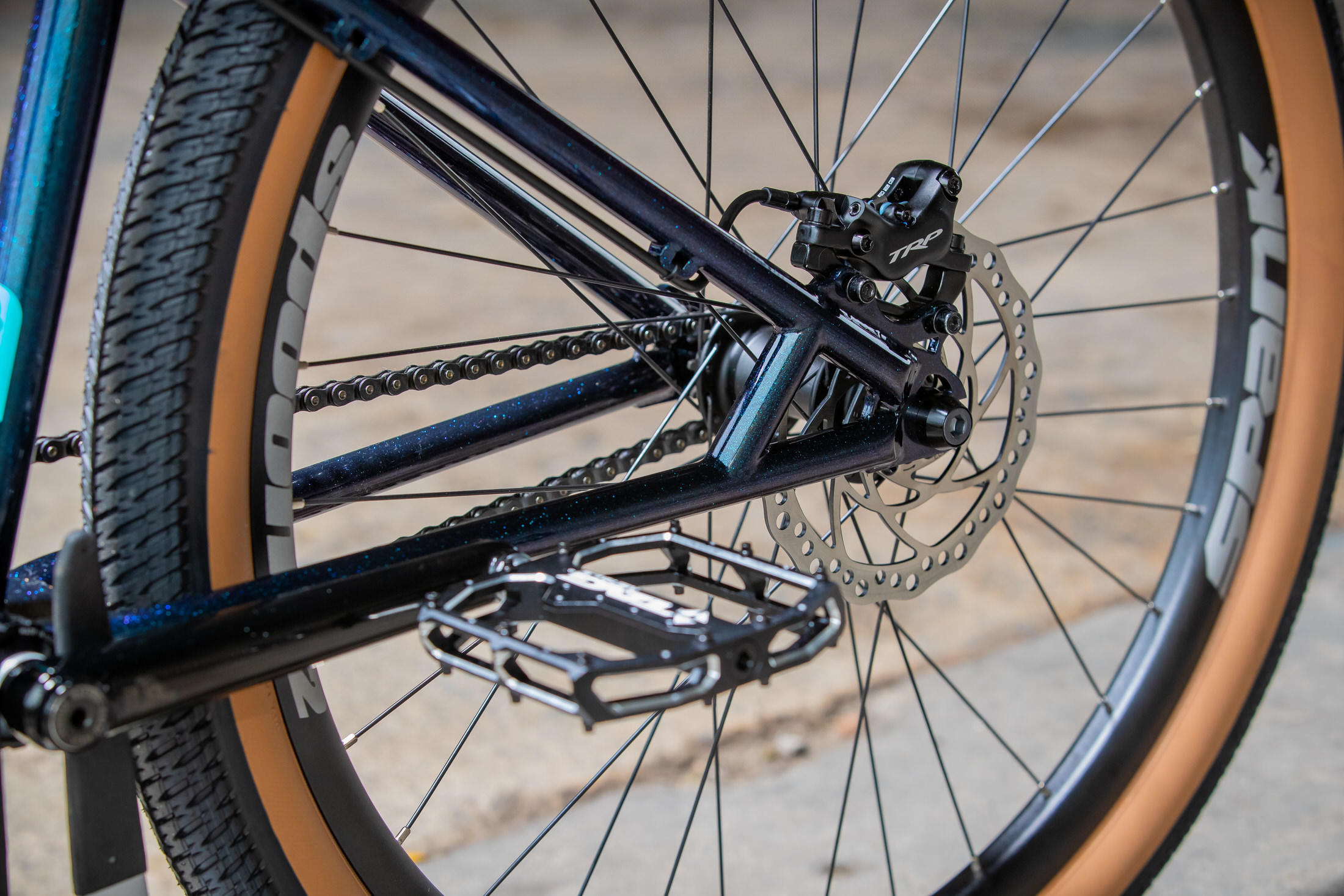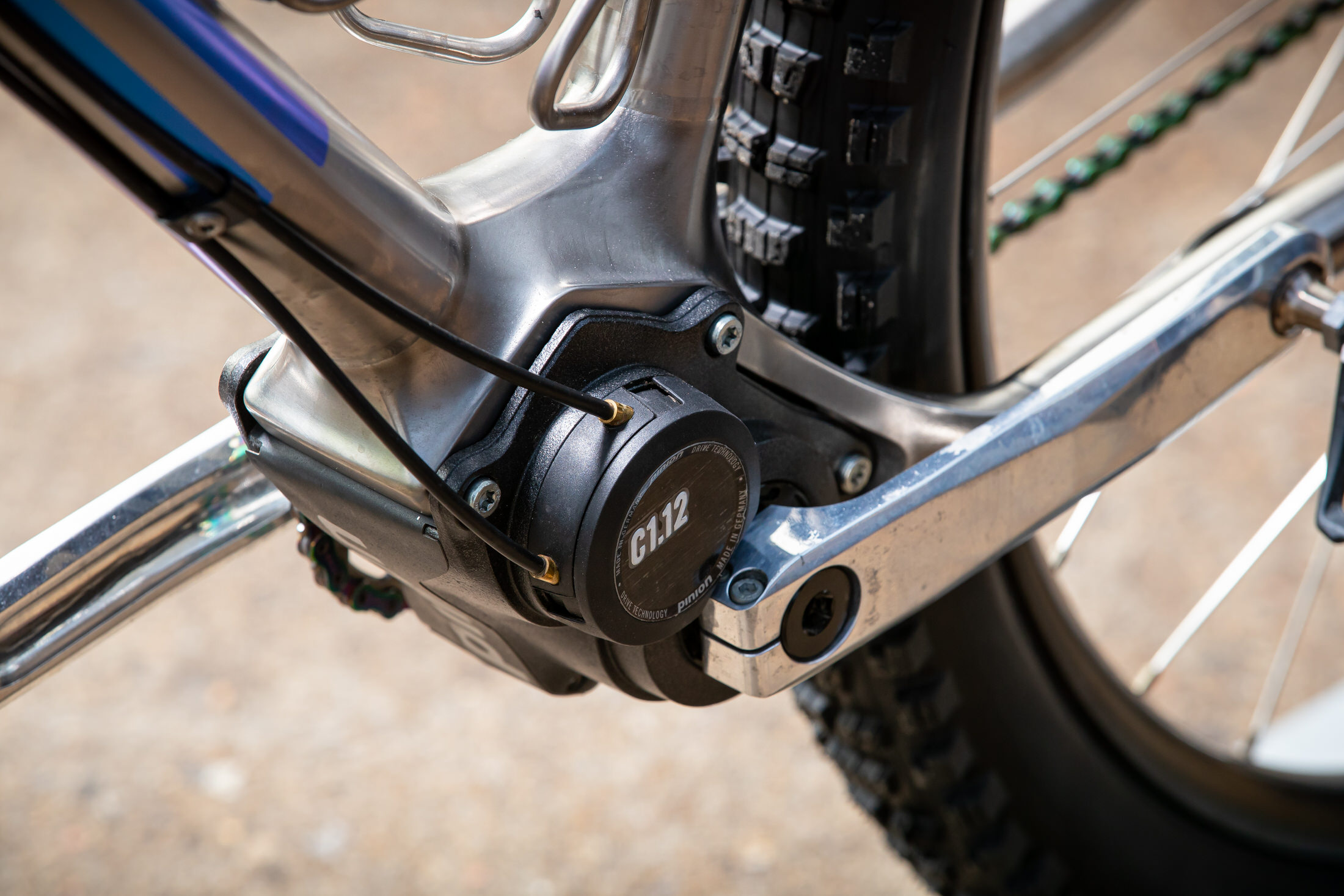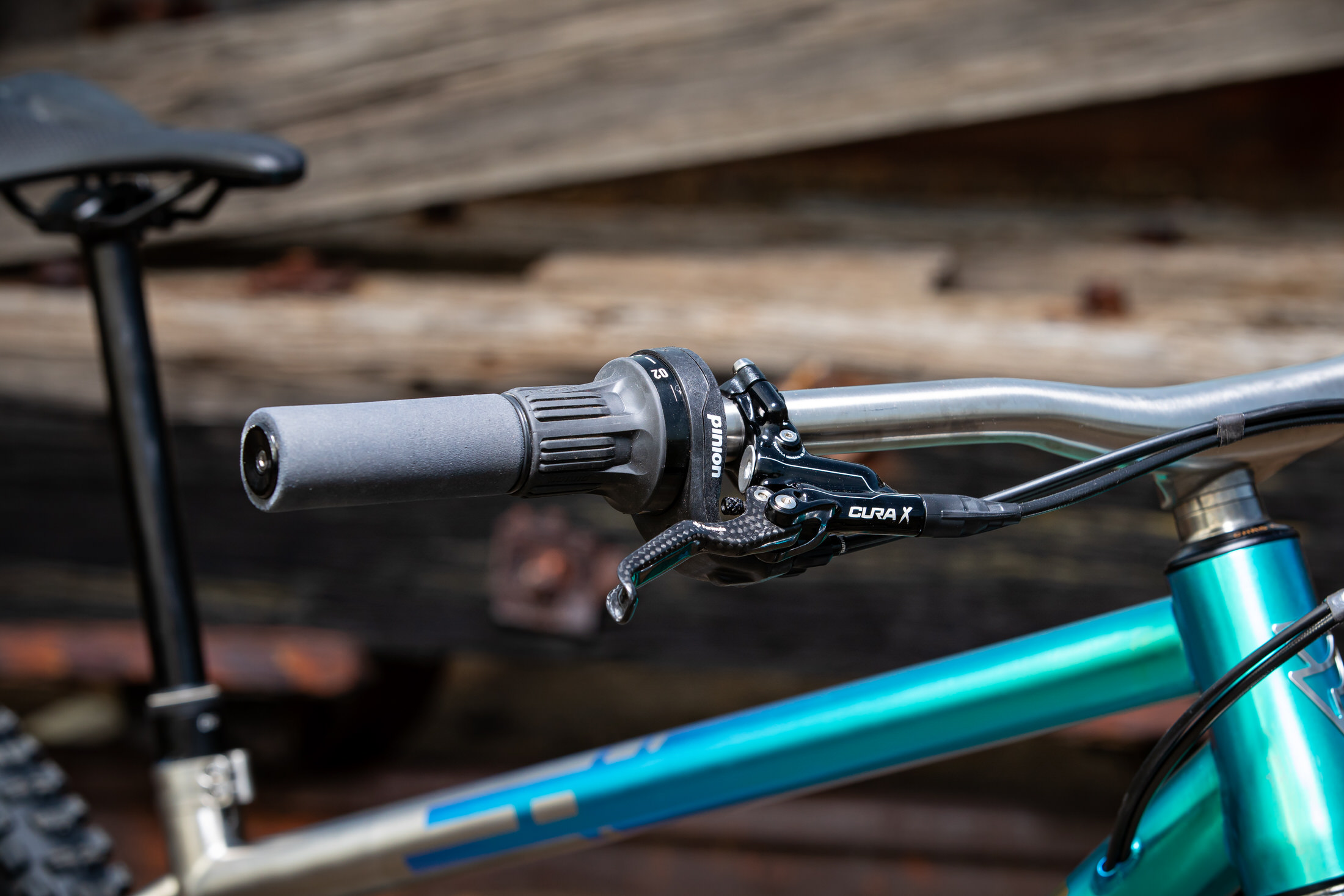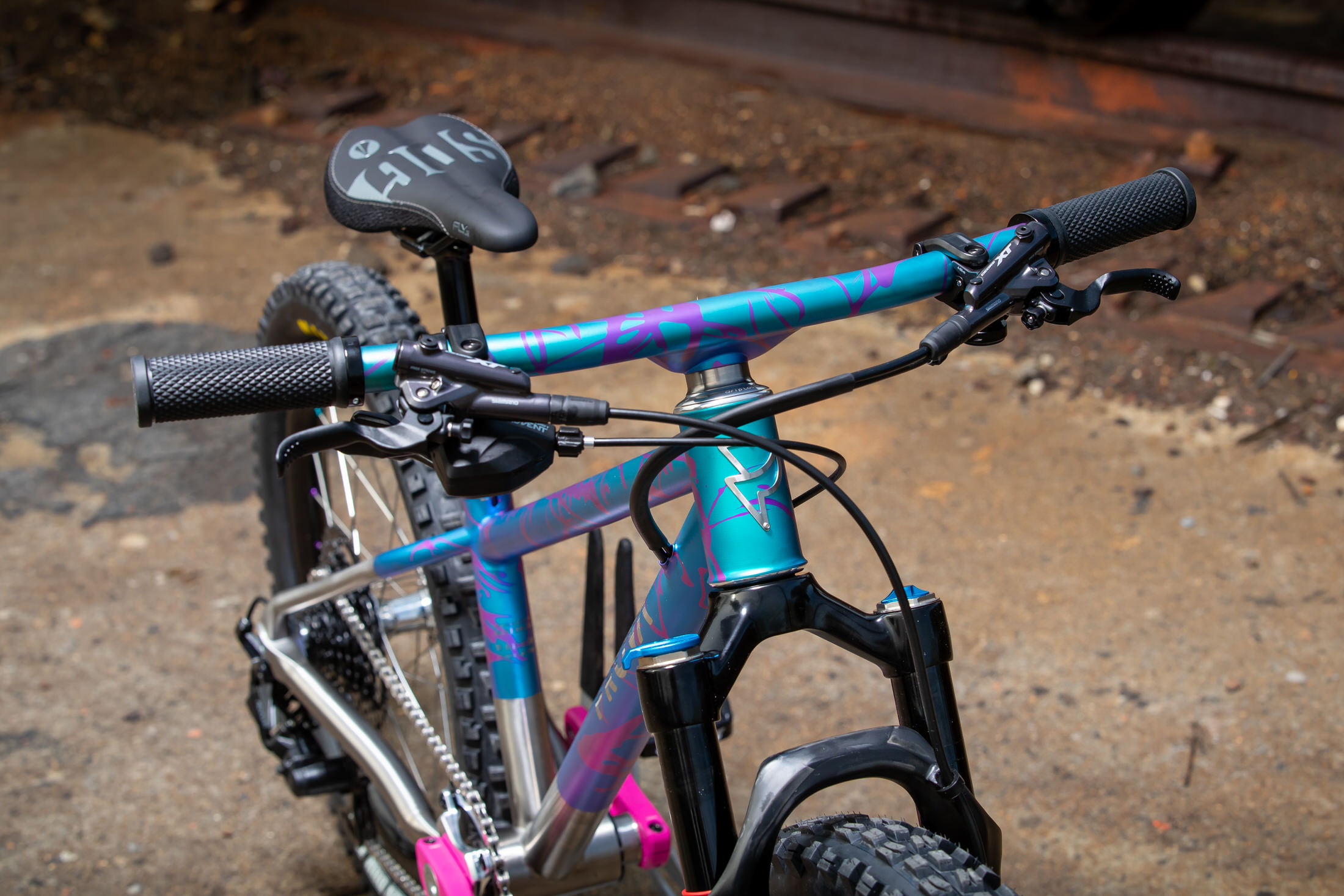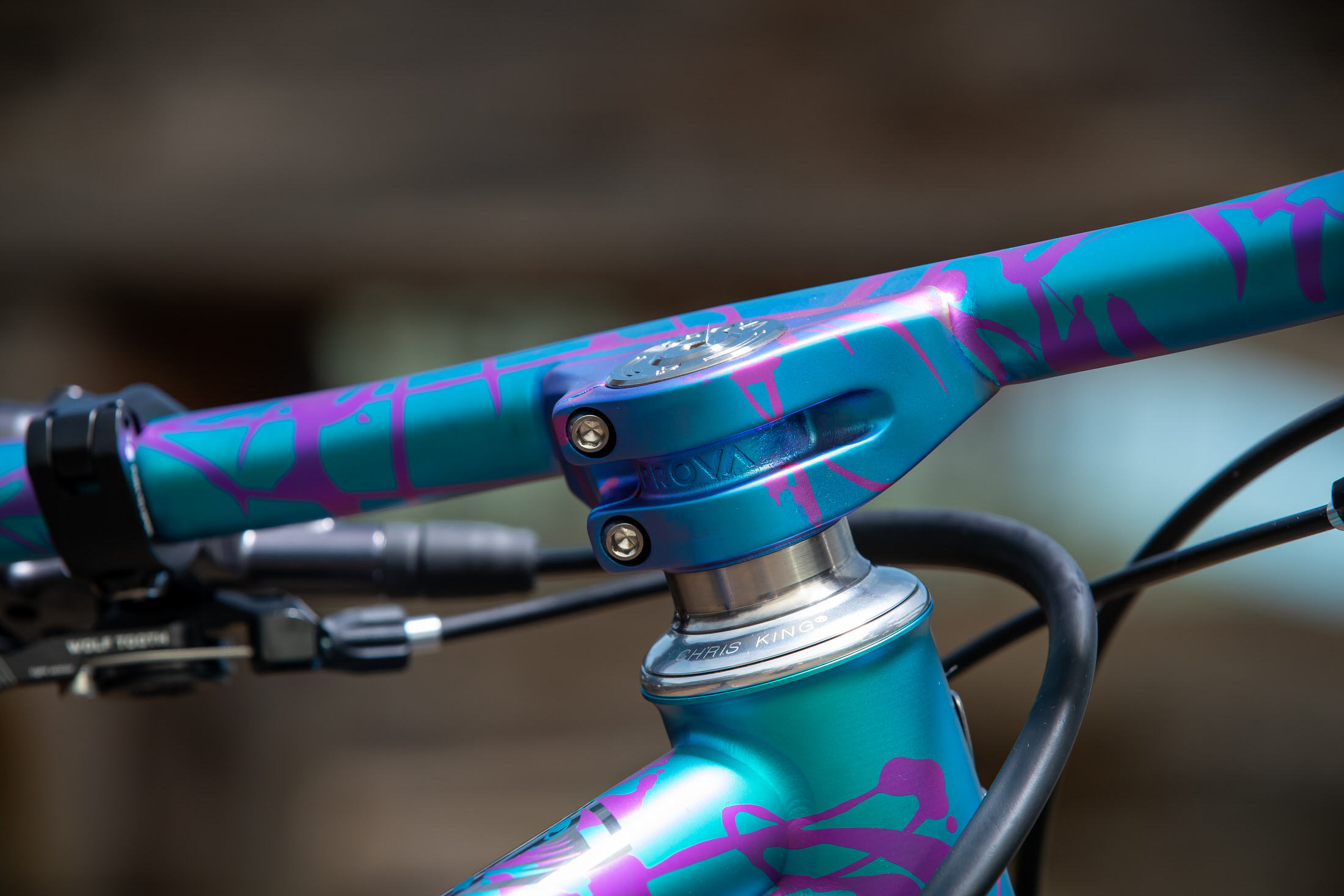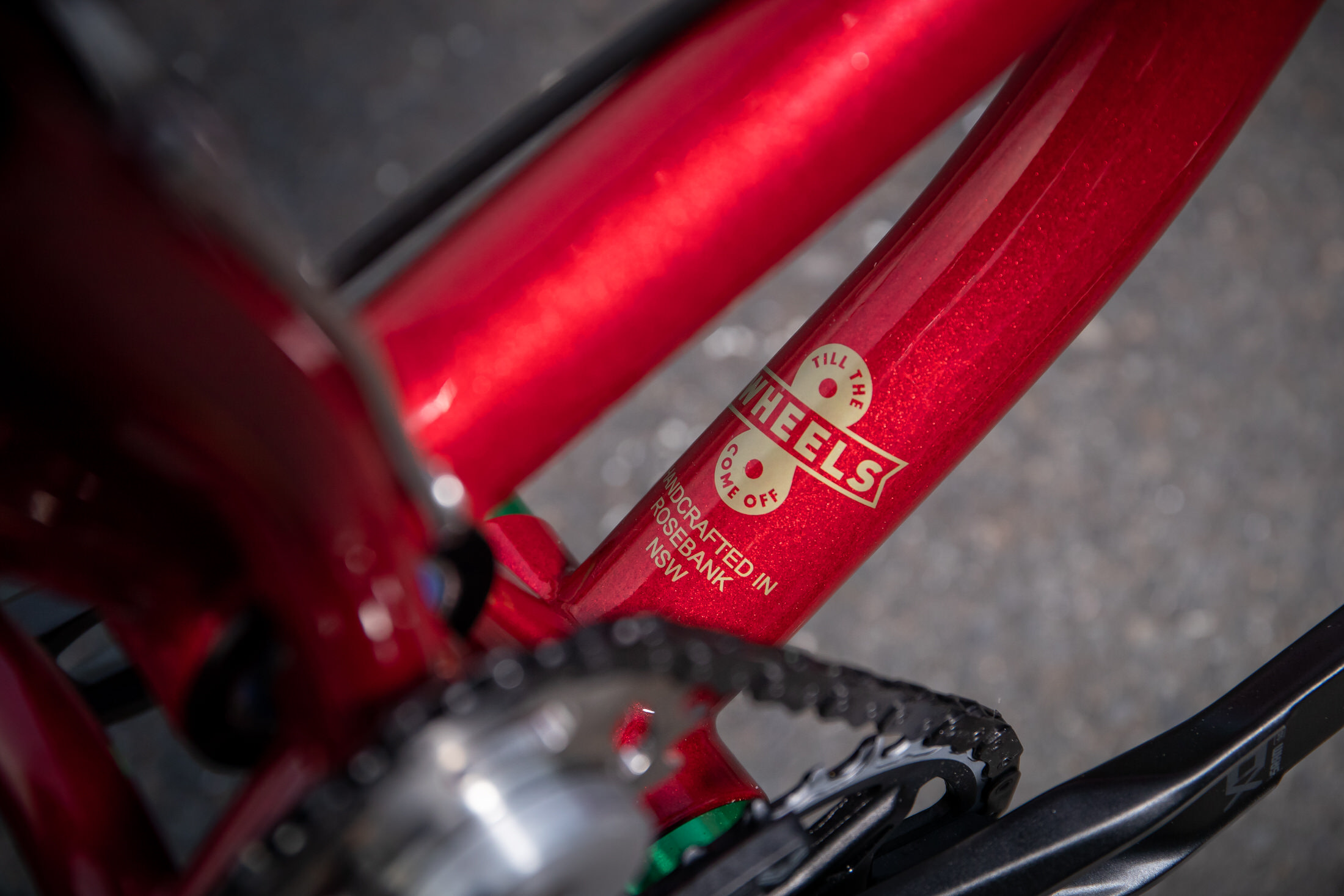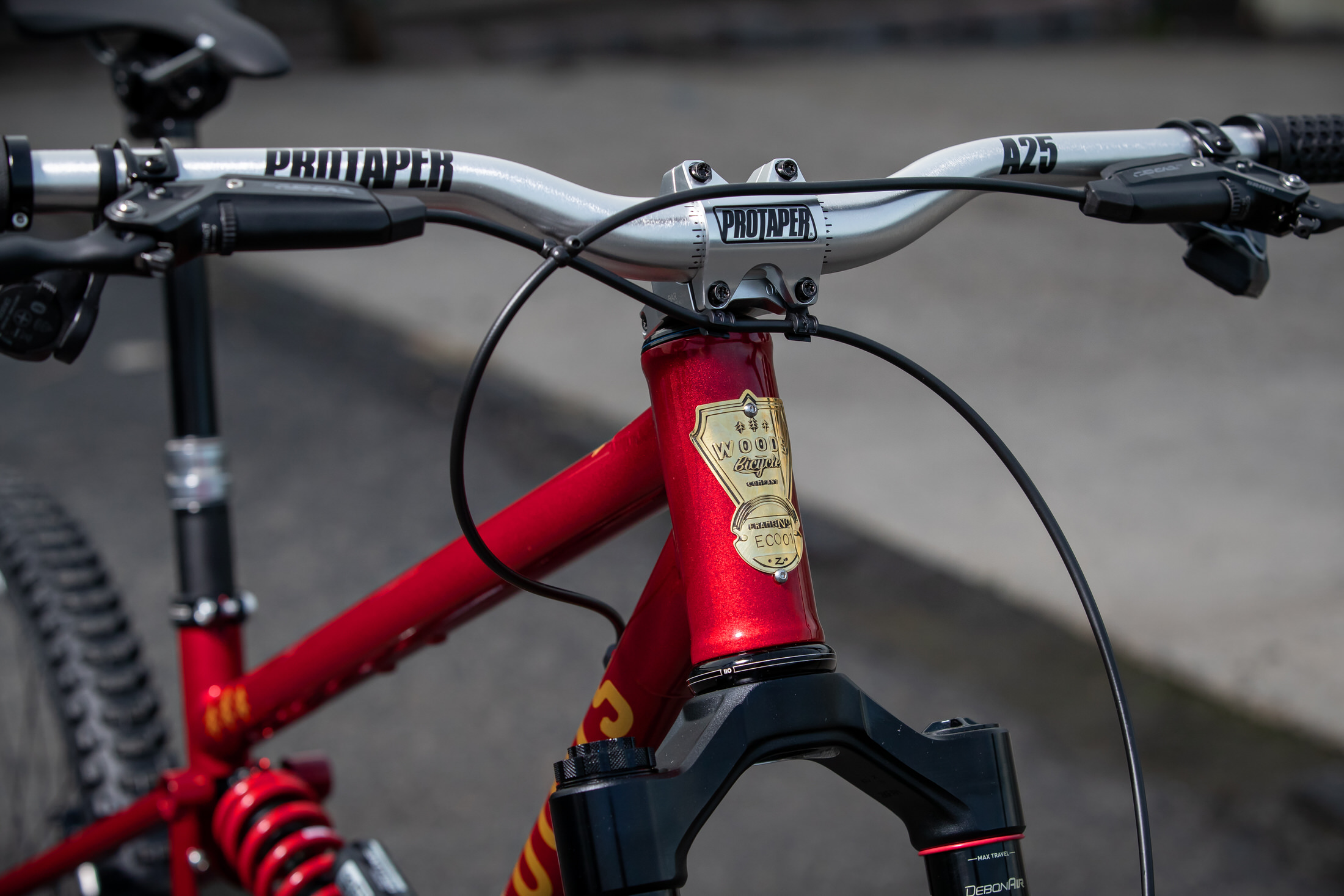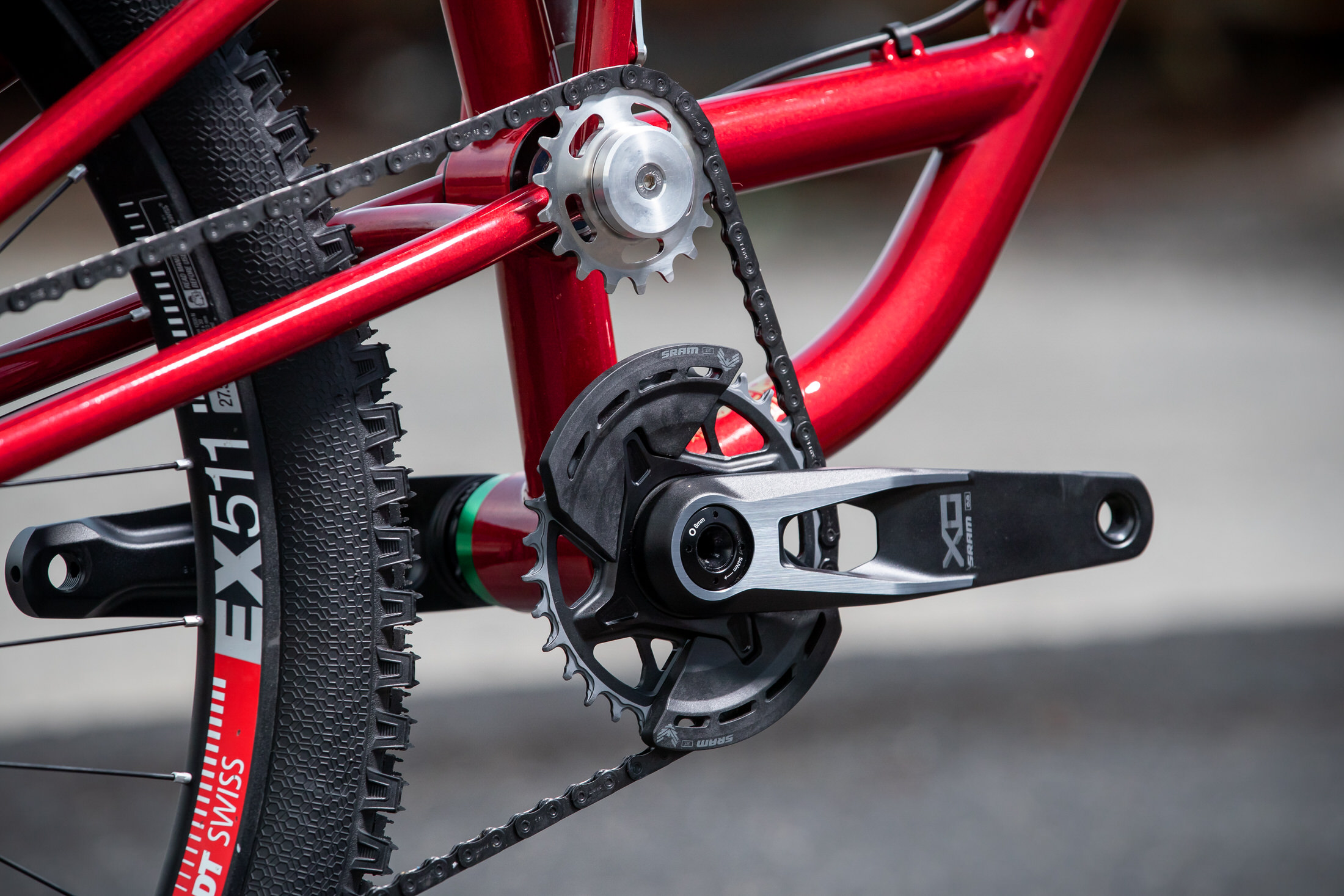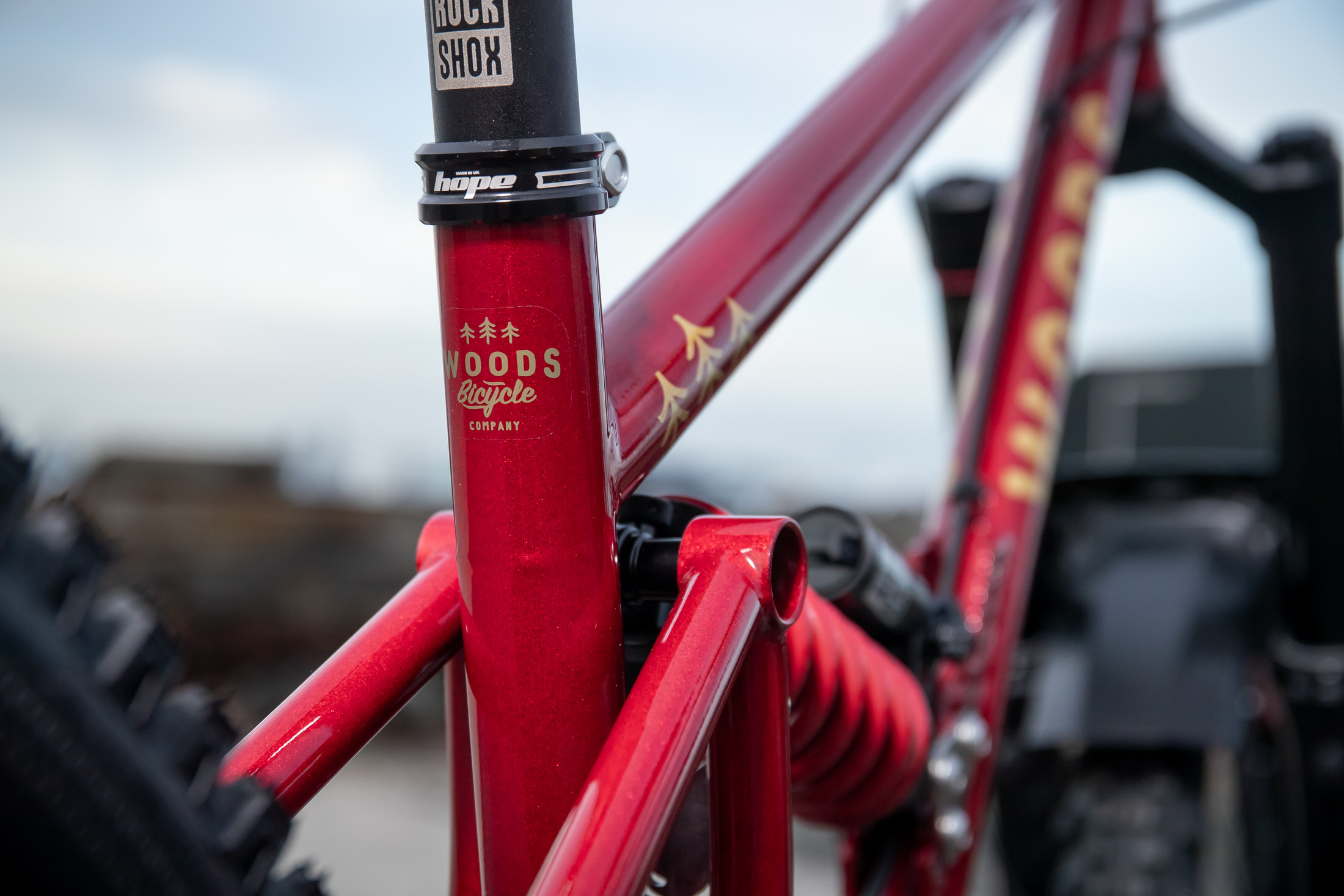“Let’s organise a beer garden at a pub in Fitzroy. We’ll tell all our friends between us, and we’ll come and have an afternoon and just look at your bikes, and drink beers, and try and get some attention,” Nathan Lorkin, the man behind the Spoken Handmade Bicycle Show, fondly recounts a conversation with his friend and legendary frame builder Ewen Gellie.
Gellie was one of two people who held both the cross-country and downhill championship titles simultaneously (1988-1991); the other was Rob Eva of SRAM. He was renowned for being the only person to touch his builds from start to finish, even painting the frames himself. He didn’t have a sales team or a shopfront, and they were talking about how to get more orders into his build list.
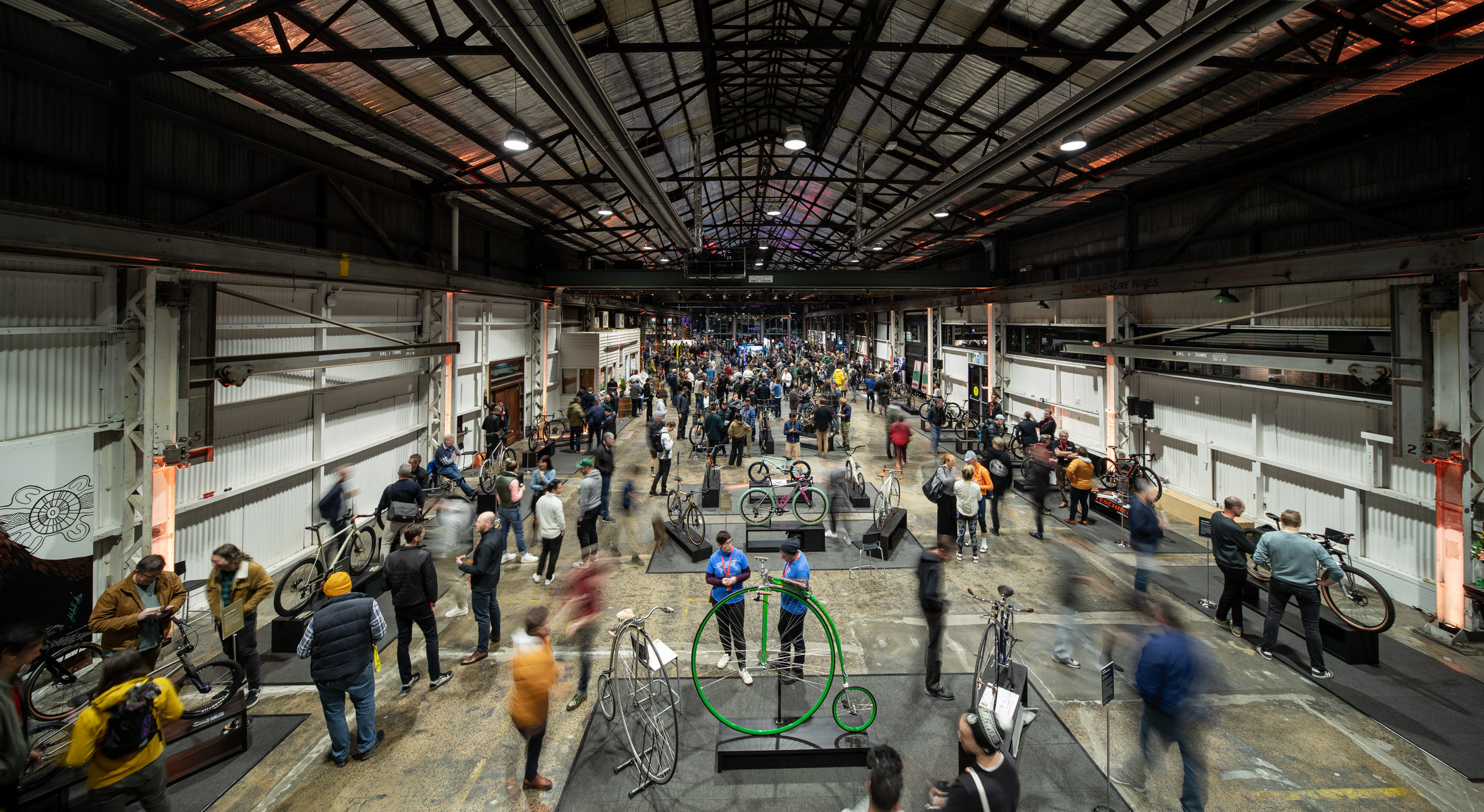
The idea got out, and before they knew it, they had twenty builders for the inaugural event back in 2018 at the Meat Market in North Melbourne. It was effectively a bespoke road bike event, with just builders, their bikes, and plenty of stories. Gravel and mountain bikes joined in 2019, followed by a move in 2021 to their current home at the Seaworks Maritime Precinct in historic Williamstown.
When you walk in, it’s not giant banners, loud music and flashy marketing like Eurobike or Sea Otter. The focus was squarely on the builders and their bikes, and a few displays of high-end parts to hang off of them.
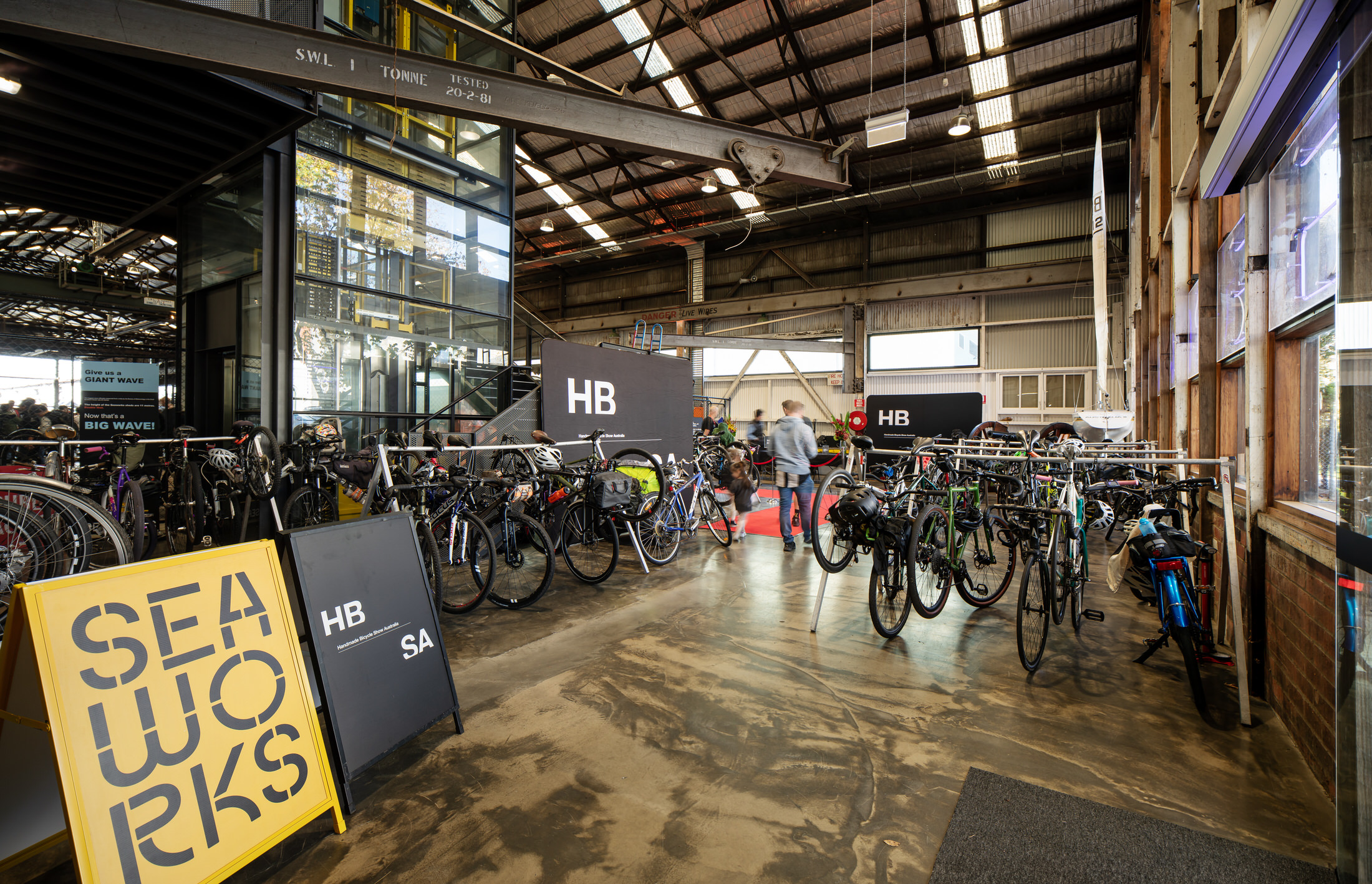
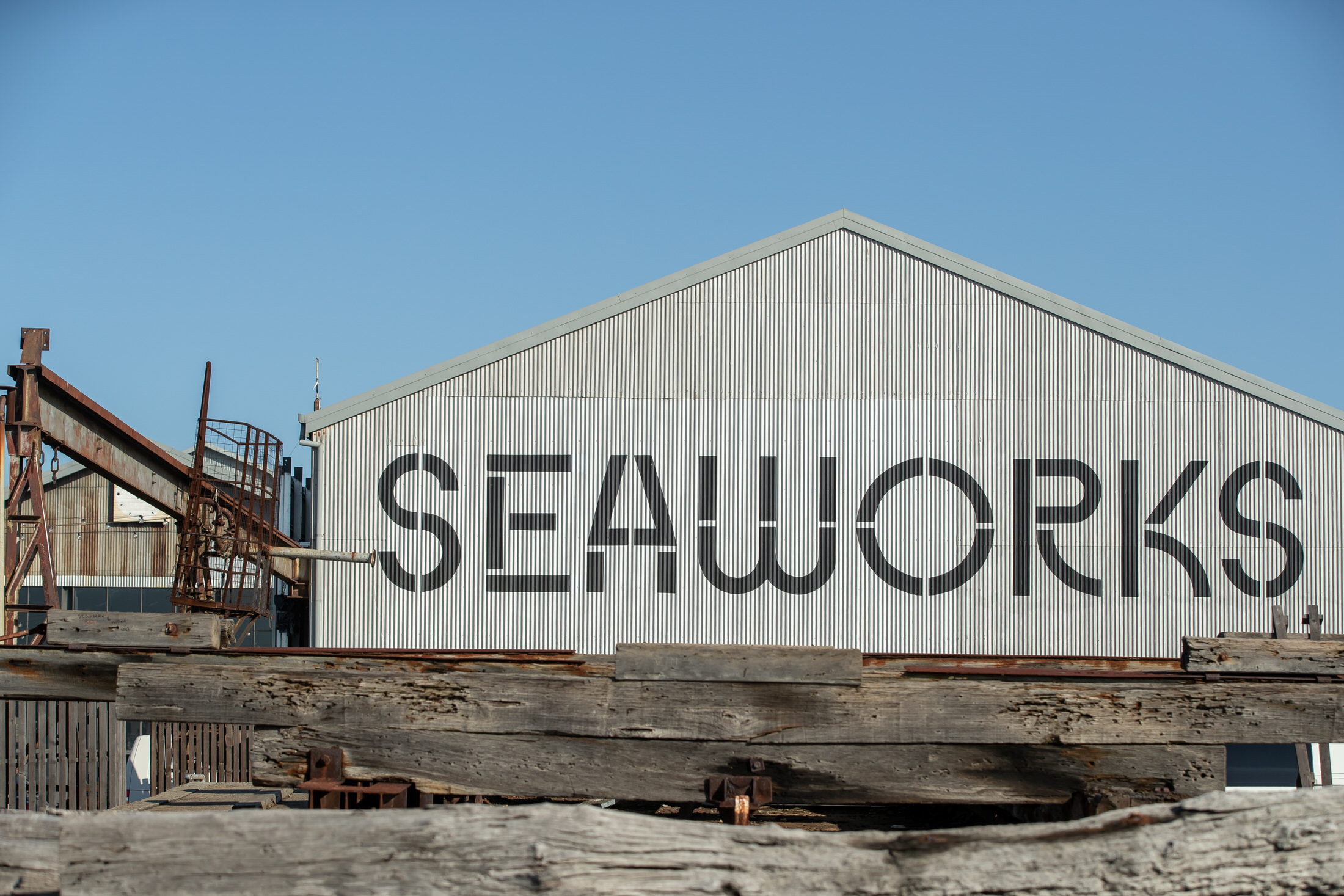
Moving through a sea of steel, titanium, cutting-edge marvels of carbon fibre and even wood, many of these bikes were only completed in the nights and weeks before the show, waiting for their new owners to collect them on Sunday. Some still were the craftsman’s personal project bikes.
Come along as we ogle these lovely bits of handmade goodness.

Related:
Trinity Gravity
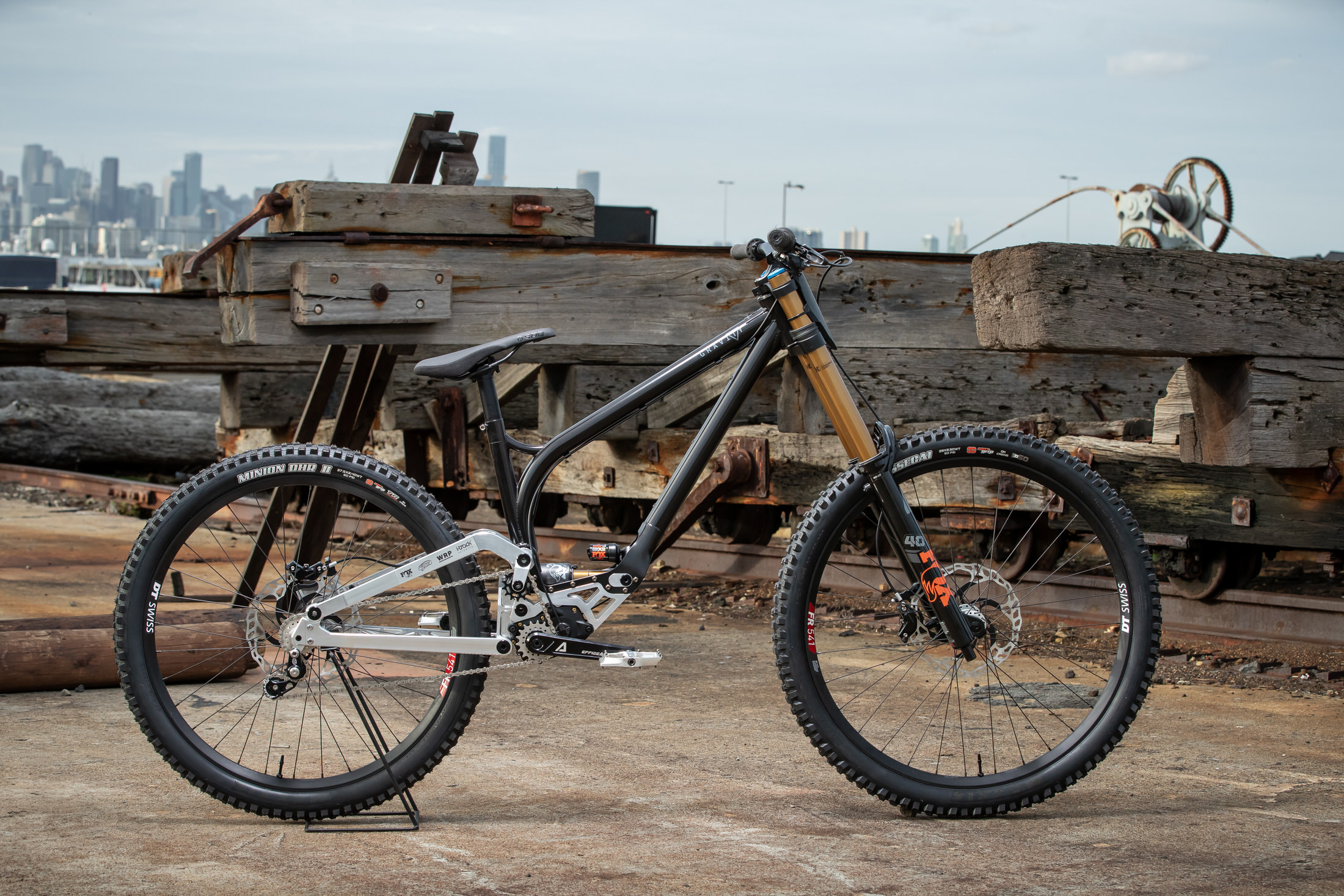
By now, you’ve seen them on Instagram, Trinity Gravity was one such builder, with a customer’s newly finished bike waiting to be collected on Sunday.
Two of the Trinity trio, Nigel Petrie and Mic Williams, were on hand to walk us through what they have been up to, reminding everyone they’re forever tweaking and learning, hence why we’ve seen the continued development of these bikes in real time.
These bikes are designed to go fast, very fast, and Trinity had brought bikes set up for enduro and DH. The front end is made using 4130 chromoly, while the rear triangle is 6061 billet aluminium. A flip chip allows the rear travel to go from 160-175 to 200mm thanks to the patented i-Track suspension design.
Before we were allowed to shoot the V5-001, Petrie finished the bike with a fresh “Gravity” vinyl decal.

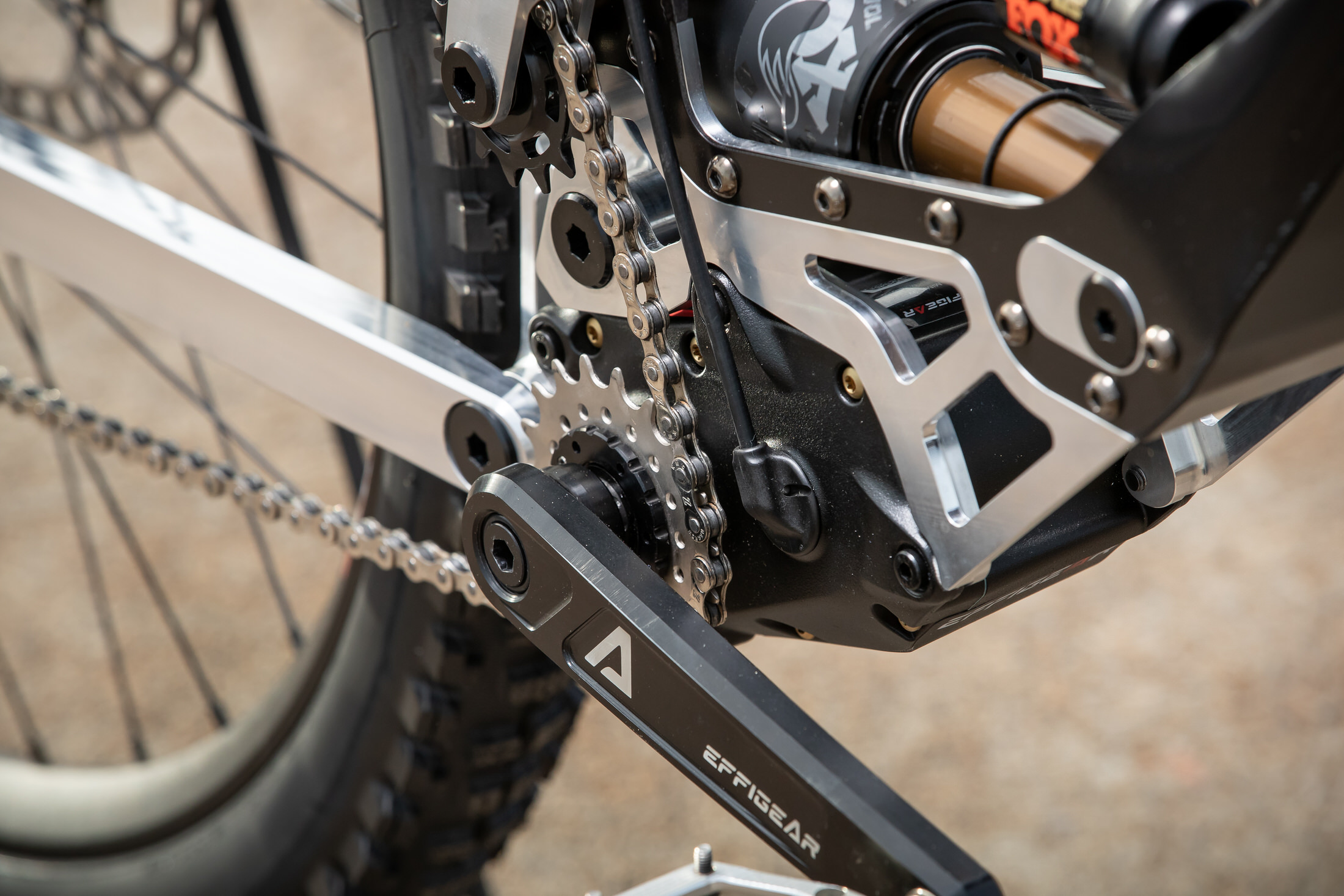
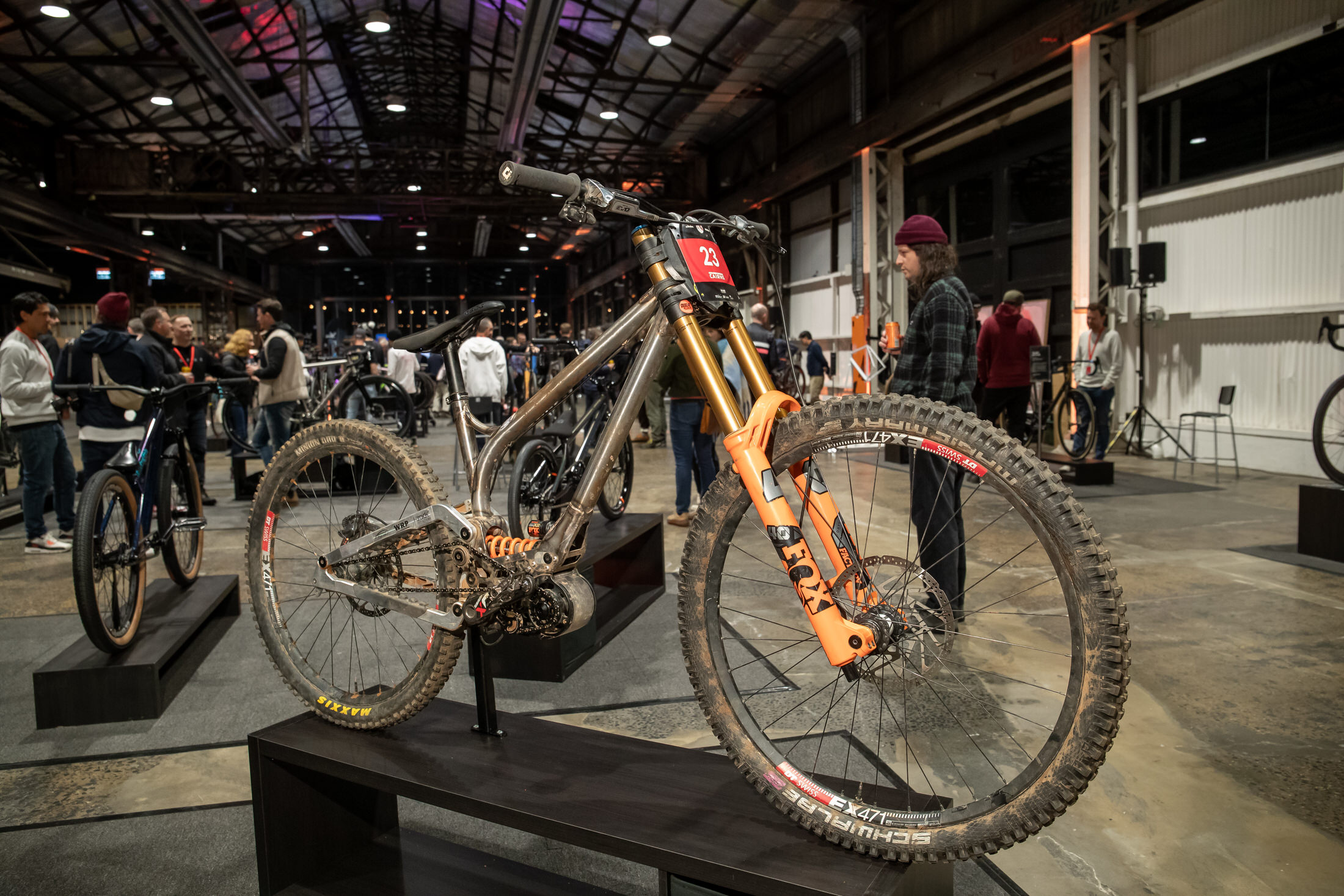
The bikes are designed with modular bottom brackets so the end user can bolt on a gearbox, traditional drivetrain, or whatever they have been cooking up in the WRP workshop — when it comes to market.
Sitting pretty alongside was Mick’s race rig, a Trinity V4, still covered in dust from Crankworx with what he describes as “just a cassette in a can, really.”
HTech
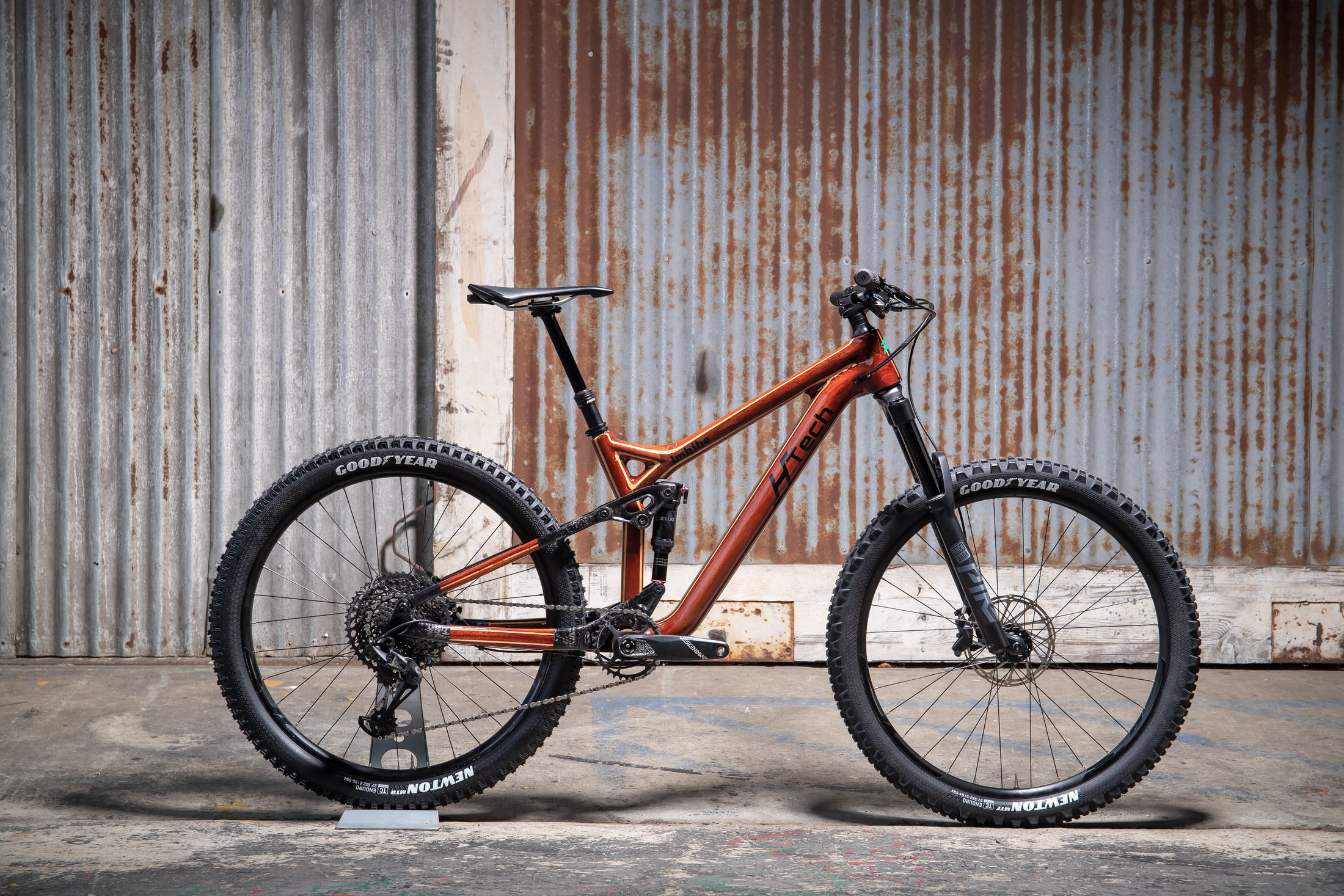
Next up from Perth is Hayden Francis of HTech with his first dual-suspension MTB, the 18th wooden bike he has made. Francis started making bikes from wood when he was a teenager. He was into carpentry and had a free build project at school. So he decided to build a bike — the kid clearly likes a challenge.
The frames are shaped by hand, inside and out, tuned to suit the rider. If the silhouette of this frame looks a bit familiar, that’s because Francis reverse-engineered it from a Merida 140. Wanting a challenge and something a bit more robust, he drew it up in CAD, and away he went.

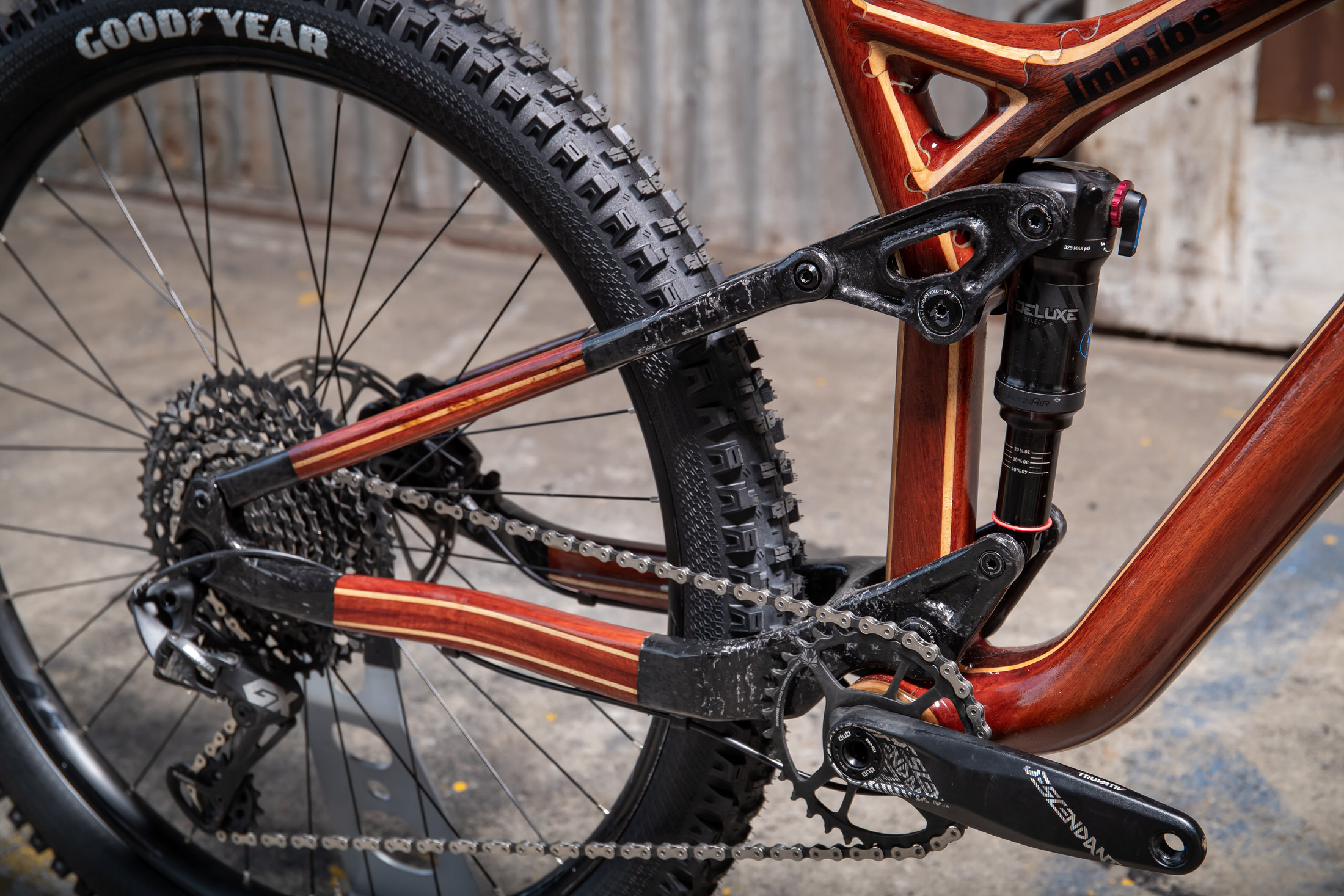
Francis walked us through the arduous process of creating this head turner, from sourcing the wood at government timber auctions to the year-long drying and seasoning. And then bonding and machining the slabs of jarrah and blackbutt to create a tapestry of textures and natural colour.
Wood has directional fibres, a bit like unidirectional carbon, and Francis tells us it has unique damping characteristics that match well with road and gravel bikes. However the amount of material required to produce a frame that was robust enough to take off-road resulted in a much stiffer bike. Because of this, he tells us it feels more like a bike made from traditional materials, bar the estimated 15-16kg weight.
Devlin Cycles
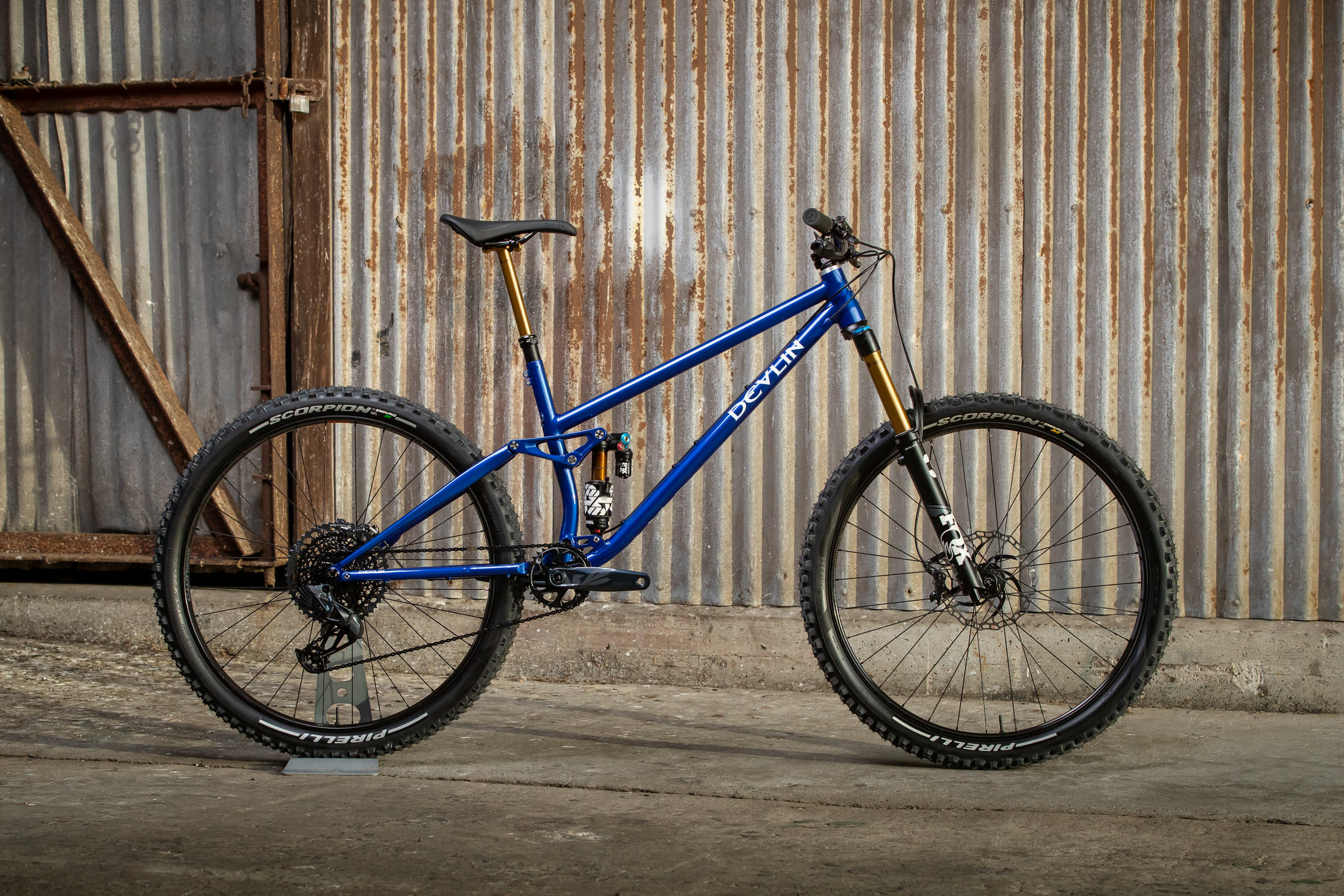
Designed for the trails of SE Queensland, Devlin Cycles creator Sean Doyle describes the Jester as a rowdy enduro race machine.
Drawing from his background as a design draftsman, Doyle tell us he has always been designing bikes. He built his first road frame from steel in 2012, fueled with the ambition to eventually build a dual suspension rig. Well, the Jester is his second dually, and it’s a sight to behold. The double-butted steel tubes look lean, harmoniously balancing strength and elegance.
The design philosophy behind the Jester is a longer front centre with a moderate 65-degree head angle; this particular bike runs a 160mm fork with 150mm of rear wheel travel. This thing looks fast, and at 15.3kg, it is pretty impressive for a steel bike.
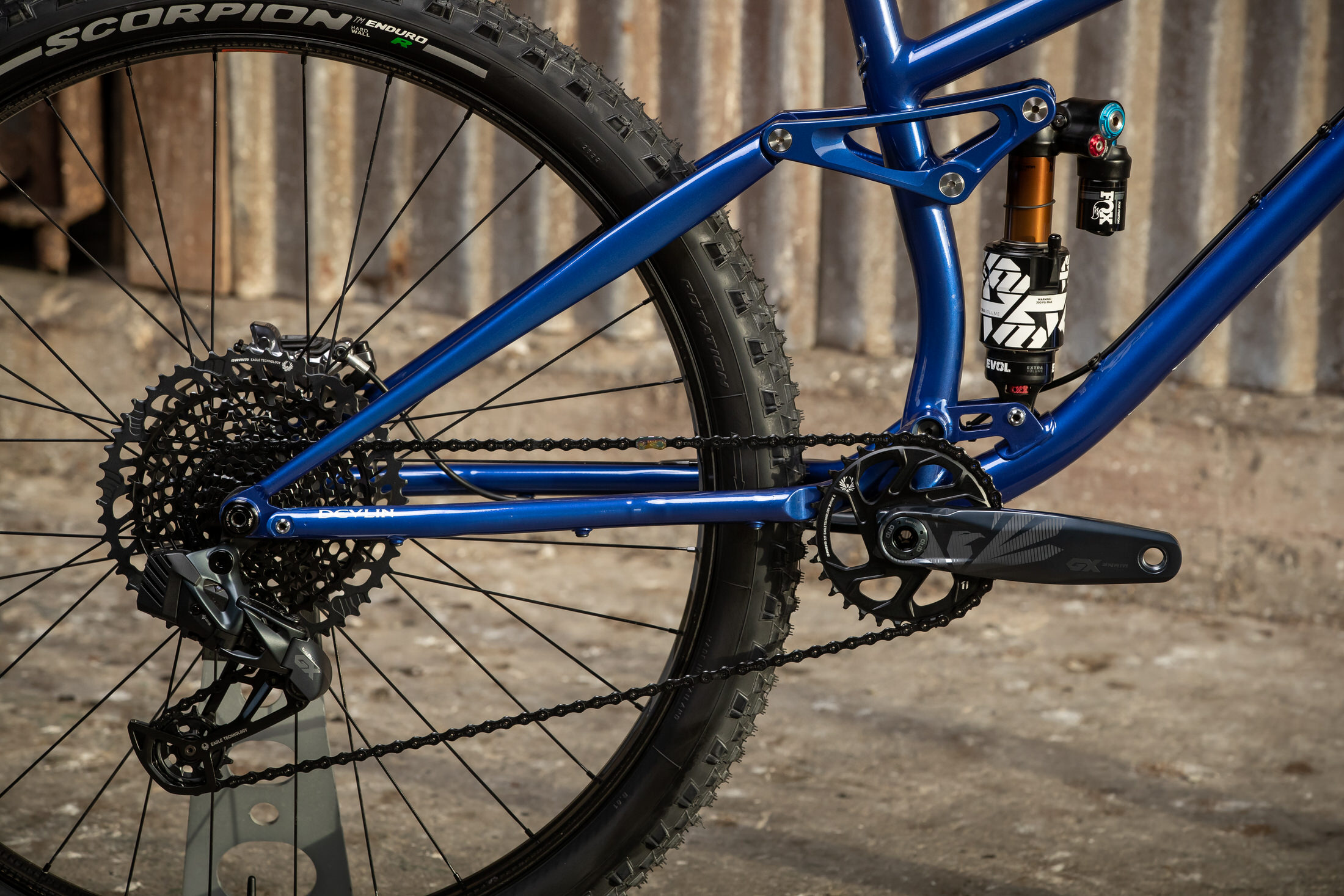
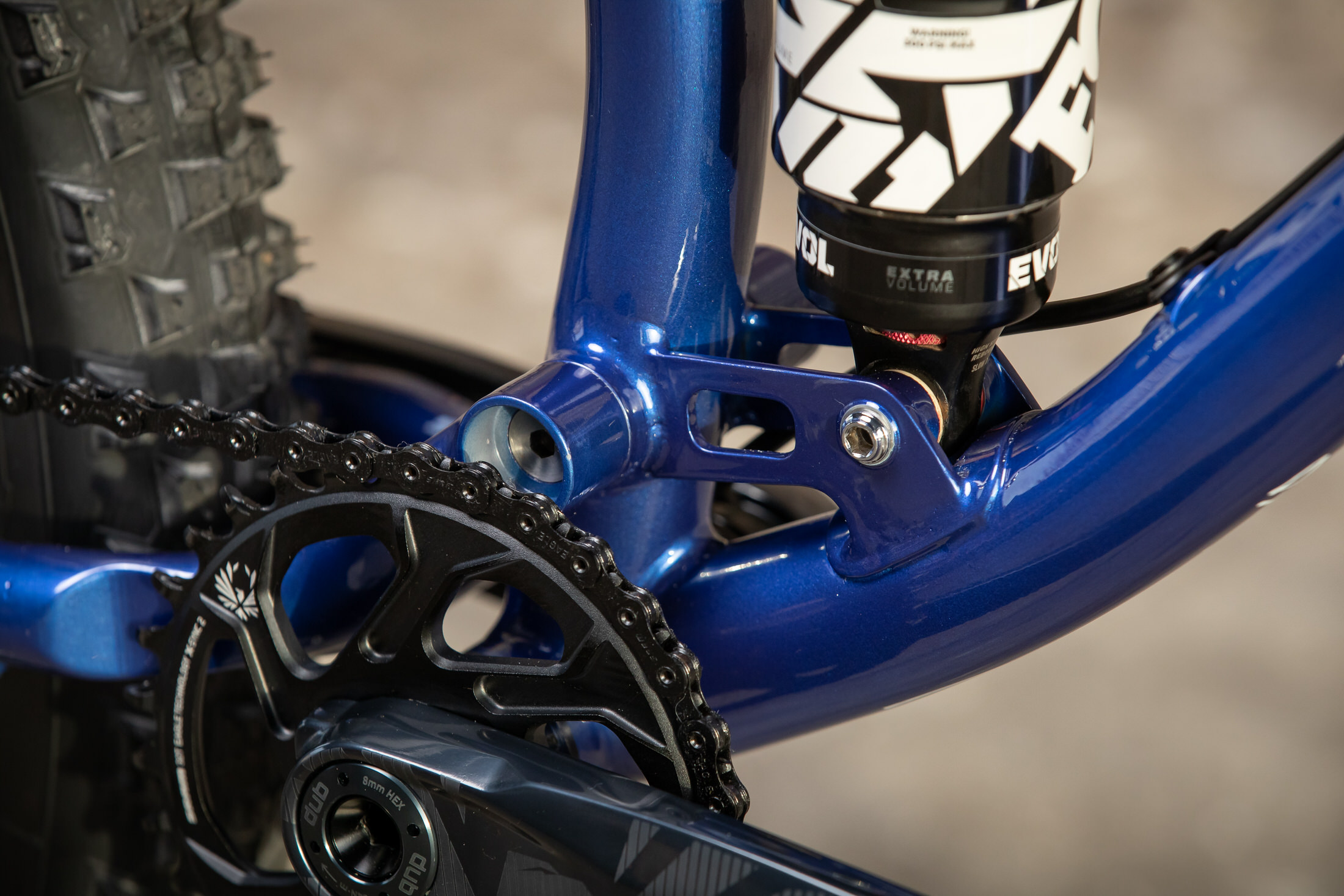
Doyle tells us he has always taken pride in keeping his bikes homegrown. However, one of the challenges of being self-funded is he had to make every cent count towards R&D and prototyping.
For this build, he decided to seek external assistance using a CNC yoke and 3D-printed parts as he needed. The chromoly tubing itself is brought in from the US, as he was unable to source anything locally that was long enough.
The Lost Workshop
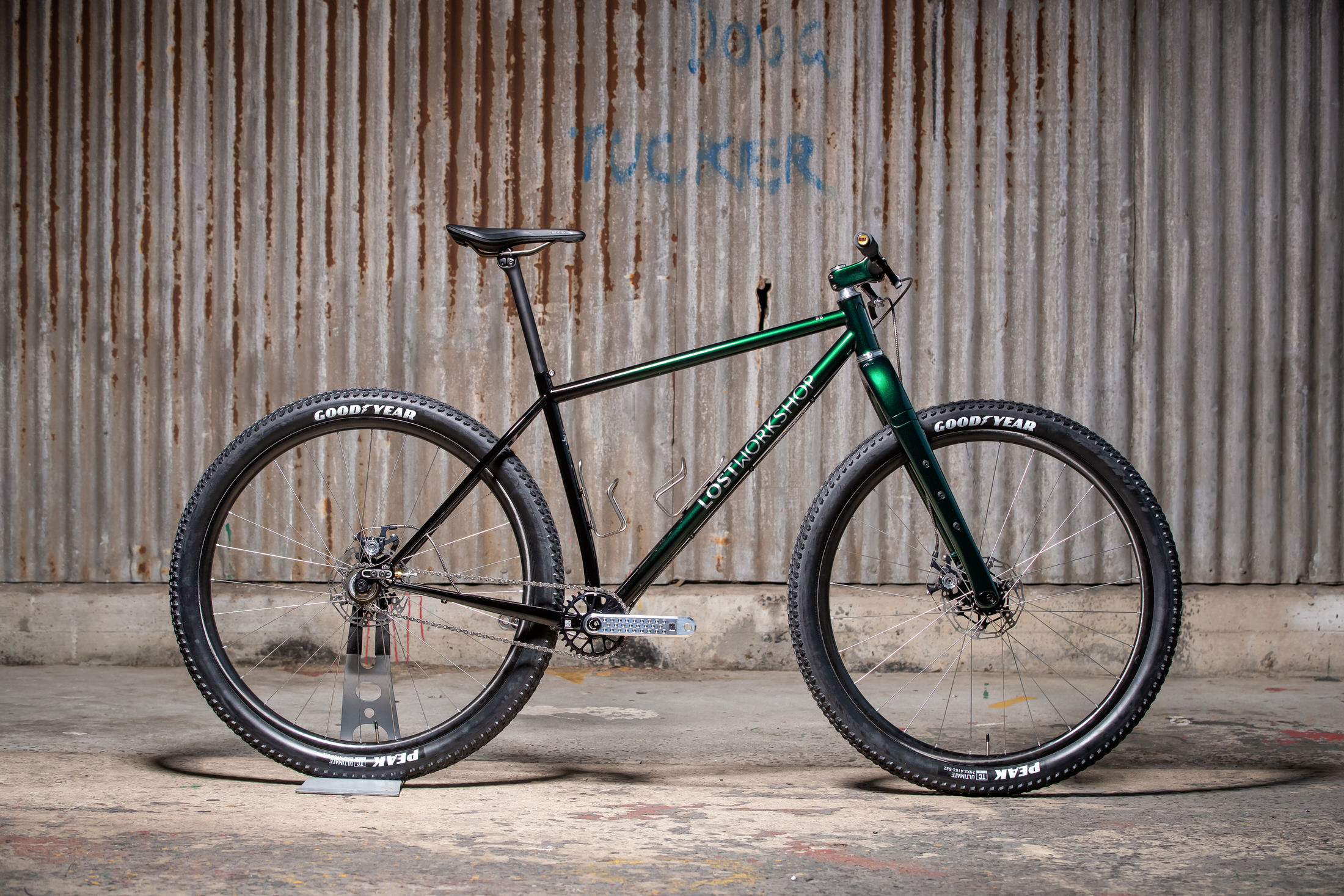
Melbourne-based builder Ian Michelson began welding up lugged frames for himself in 2016, establishing The Lost Workshop in 2018, drafting mechanic Taylor Patrick to join the team this year.
A part-time workshop, the pair produces a modest 8-10 bikes a year, but have implemented new tooling to ramp up production. They built this striking rigid 29er to commemorate Patrick’s 40th birthday. What a way to celebrate!
Patrick is an aficionado of single-speed bikes, and so they set out to create something that was cross-country racey with a modern twist. This meant incorporating a slacker head angle and a lower bottom bracket to infuse modern characteristics into the traditional aesthetic.
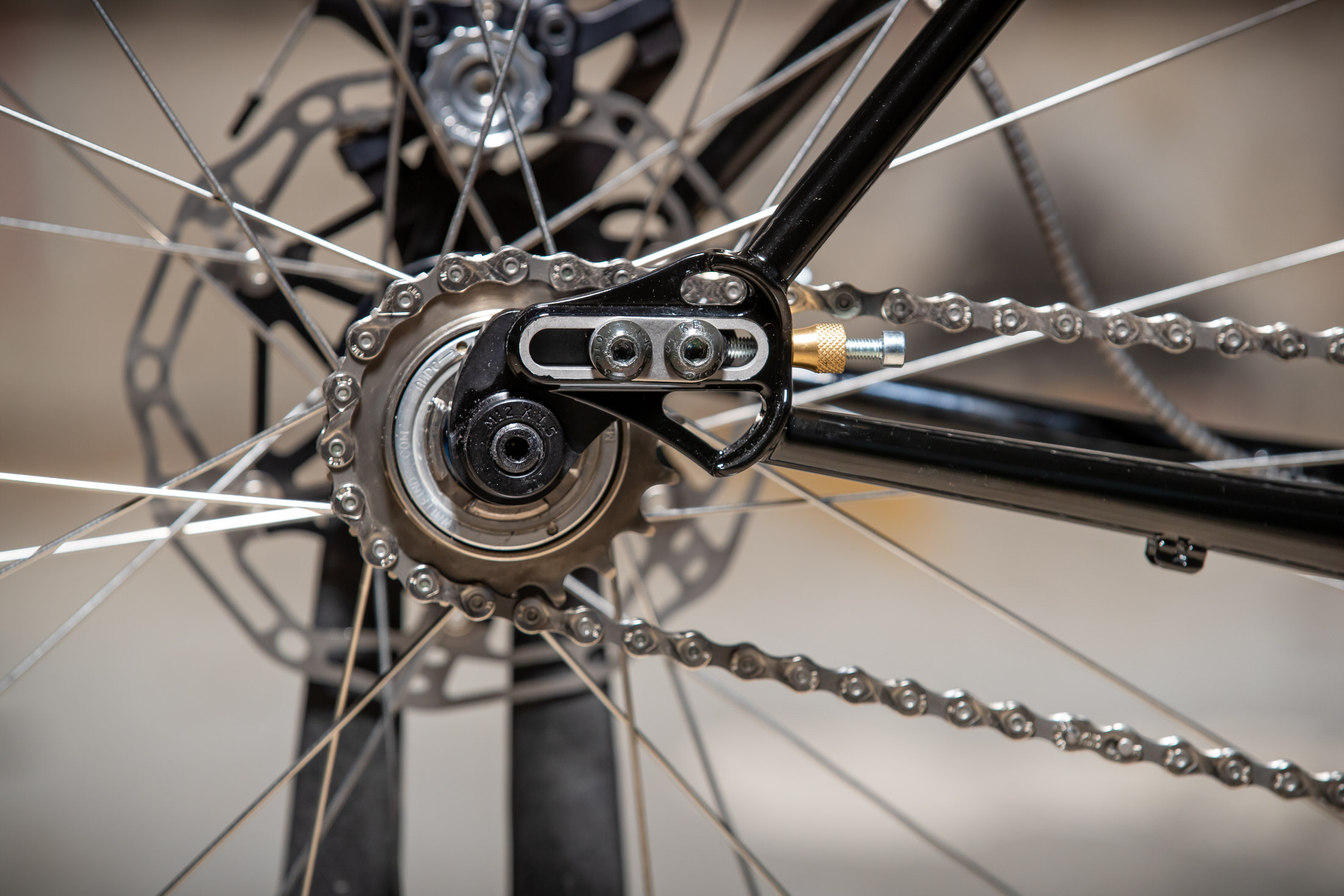
The frame itself showcases premium Columbus tubing, a crafted head tube and dropouts from Paragon Machine Works. The biggest challenge of this build was finding stays with enough tyre clearance, as there was nothing available off the shelf.
A common thread between many builders is versatility and a focus on future-proofing — these aren’t your disposable plastic fantastic bikes. This speedster accommodates singlespeed or geared drivetrains and rigid or suspension setups. Although not UDH compatible, the dropouts are SRAM Transmission friendly via a thoughtful insert by Paragon.
The pair joked that they fell into a pair of Paul Klampers and built the whole bike around these brakes. We’d probably do the same because these stoppers are the bee’s knees — very boutique and hand-built.
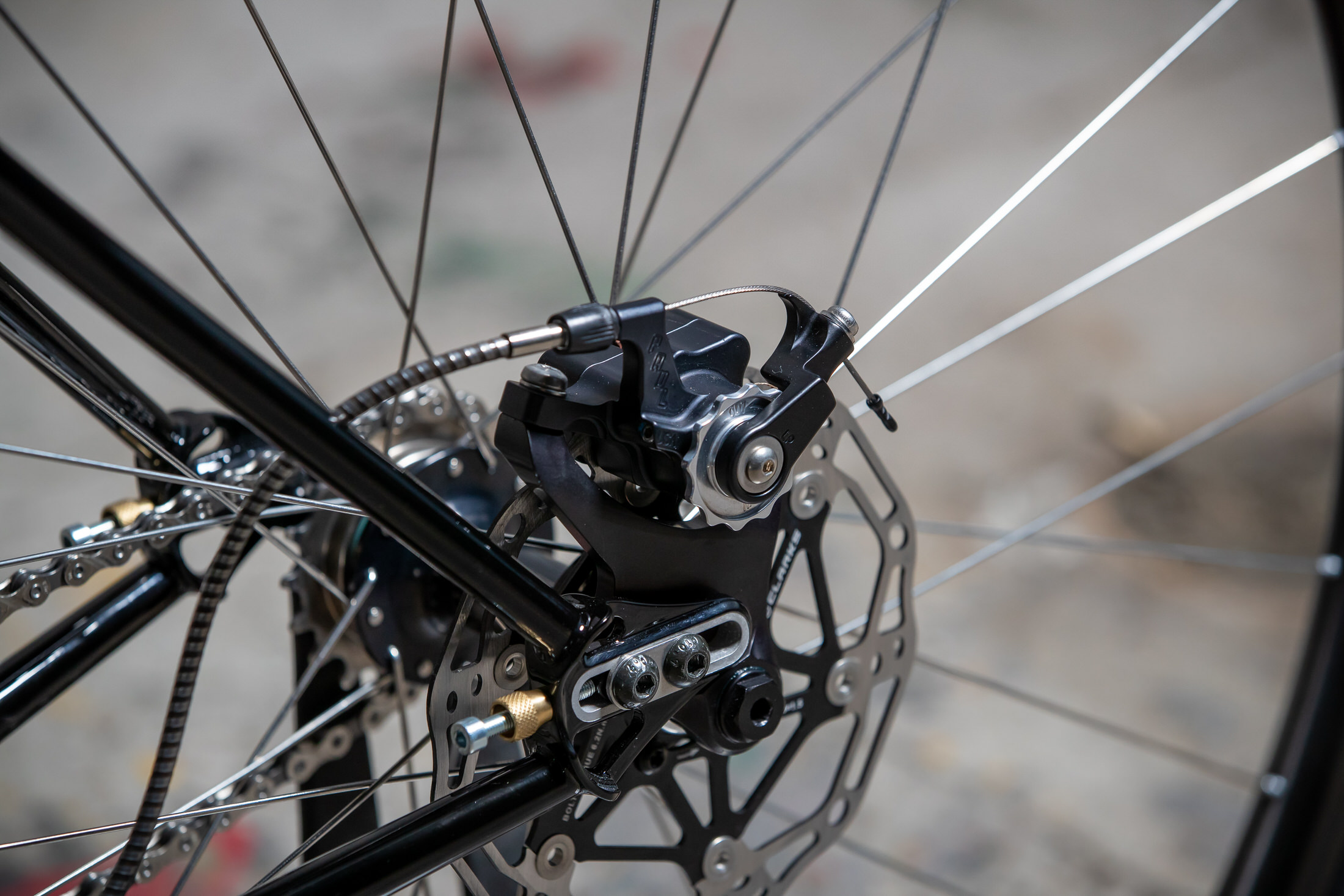
This is a mechanics’ bike through and through, with a White Industry headset, ENVE cockpit and fork, Ingrid cranks, and rolling on Light Bicycle hoops laced by Patrick himself to Paul hubs. The bike is finished with Prototipo Works bolts, a King cage, and a dirt-appropriate version of their motto, “Ride Hard Get Loose”.
Oh, and let’s not forget that paint job! The green-to-black fade is so seamless, initially, we couldn’t figure out why the back of the bike was so dark in our photos — well, that’s because it’s black.
Keep an eye out for Patrick ripping it up on this green machine at Plenty Gorge!
Paradigm Bikes
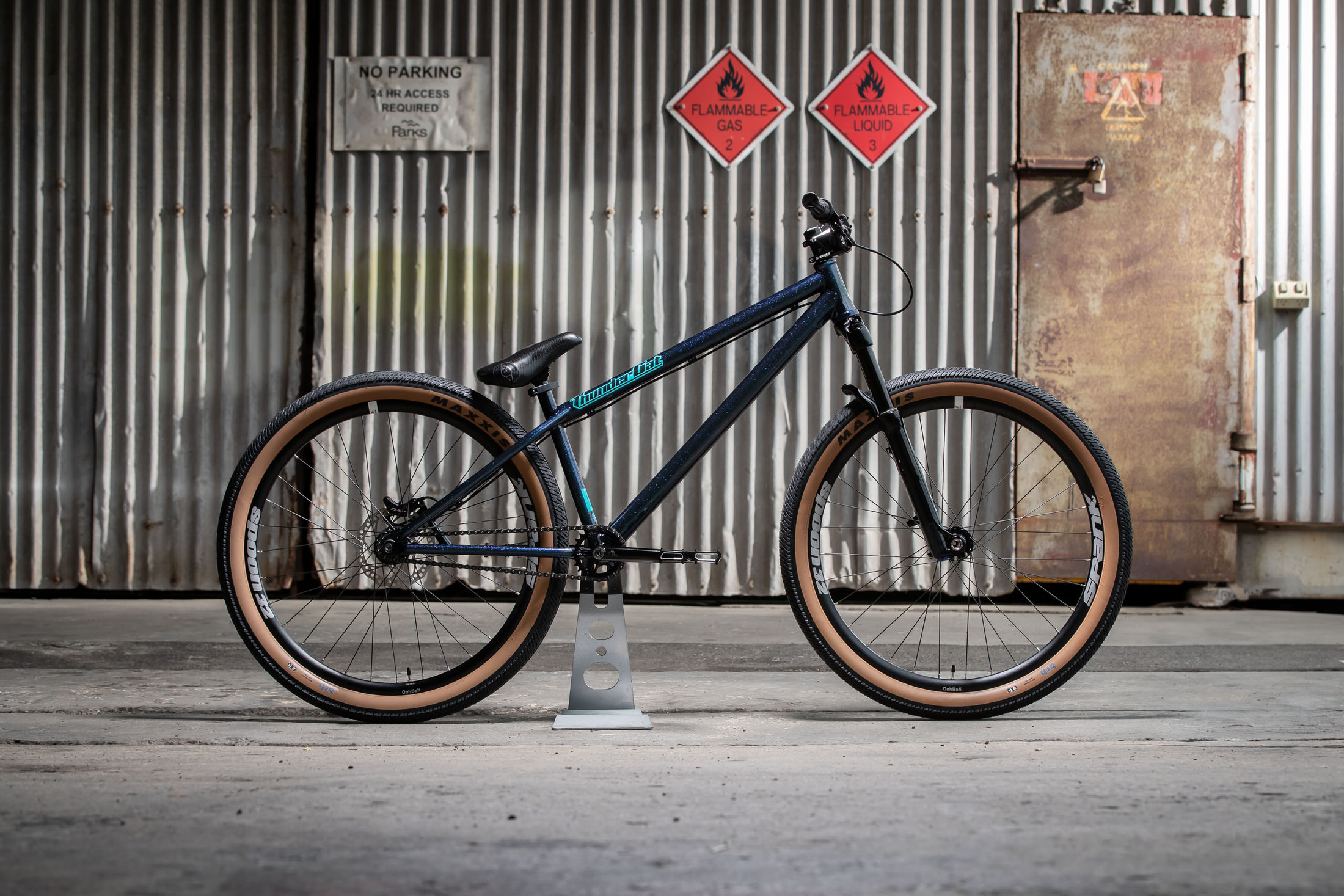
Paradigm Bikes, based in Campbellfield, Victoria, is a collaboration between two BMX legends, Dane Anderson and Paul Brincot. Among a collection of handmade BMXs lies this hidden gem – the Thundercat, an Aussie handmade dirt jumper. Made from 4130 chromoly, the tubes are hand notched, hand-cut, and assembled with the utmost care.
Each bike is custom-built to suit the individual rider, with the Thundercat boasting a 23-inch top tube. The attention to detail extends to the paint finish, exhibiting chameleon-like qualities changing from shades of blue, to green, to purple. The photos just don’t do it justice.
Prova Cycles

Run by Mark Hester and his sister Kelly, Prova Cycles produces world-class titanium frames out of Melbourne and is driven by engineering solutions, backed by ‘spreadsheets’, and a fit-first approach.
We were introduced to two exceptional bikes from Prova. Mark’s personal Ripido (‘steep’ in Italian) and Kelly’s daughter’s Piccolo (‘little’ in Italian).
The Ripido
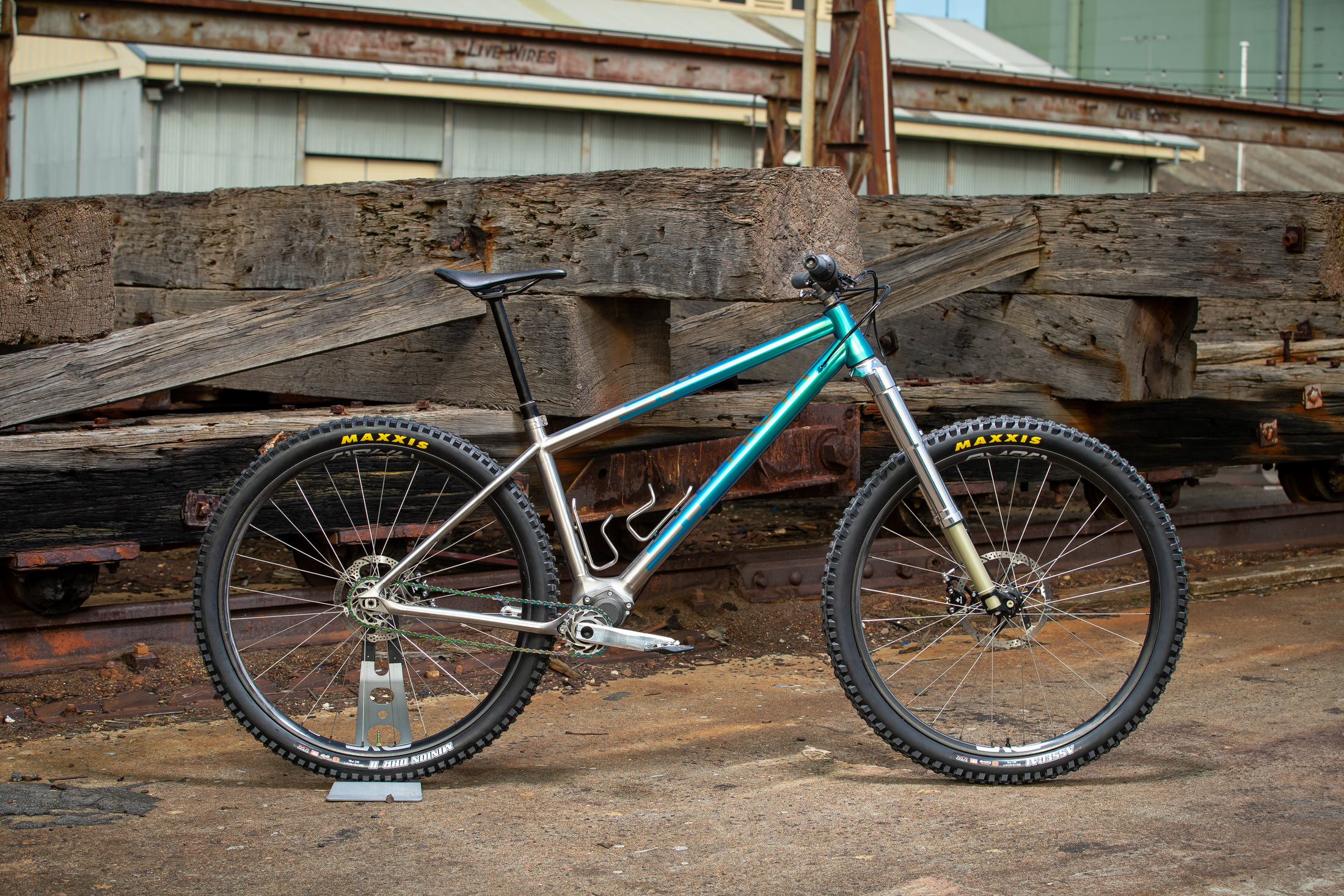
Mark’s Ripido is a statement of artful engineering, proof that spreadsheets can be sexy?! Prova sits on the ultra-custom spectrum, with everything down to geometry, tubing size, and finishing. Not a single detail is left unchecked.
“Every time I build myself one, I try different things with geometry and tube sizing,” he says.
Like a luxury watch, what you are buying into goes beyond the aesthetic — the who, why, where, and how begin to matter. At the foundation of it all, Prova, as the name suggests, is about curiosity/testing the what if.
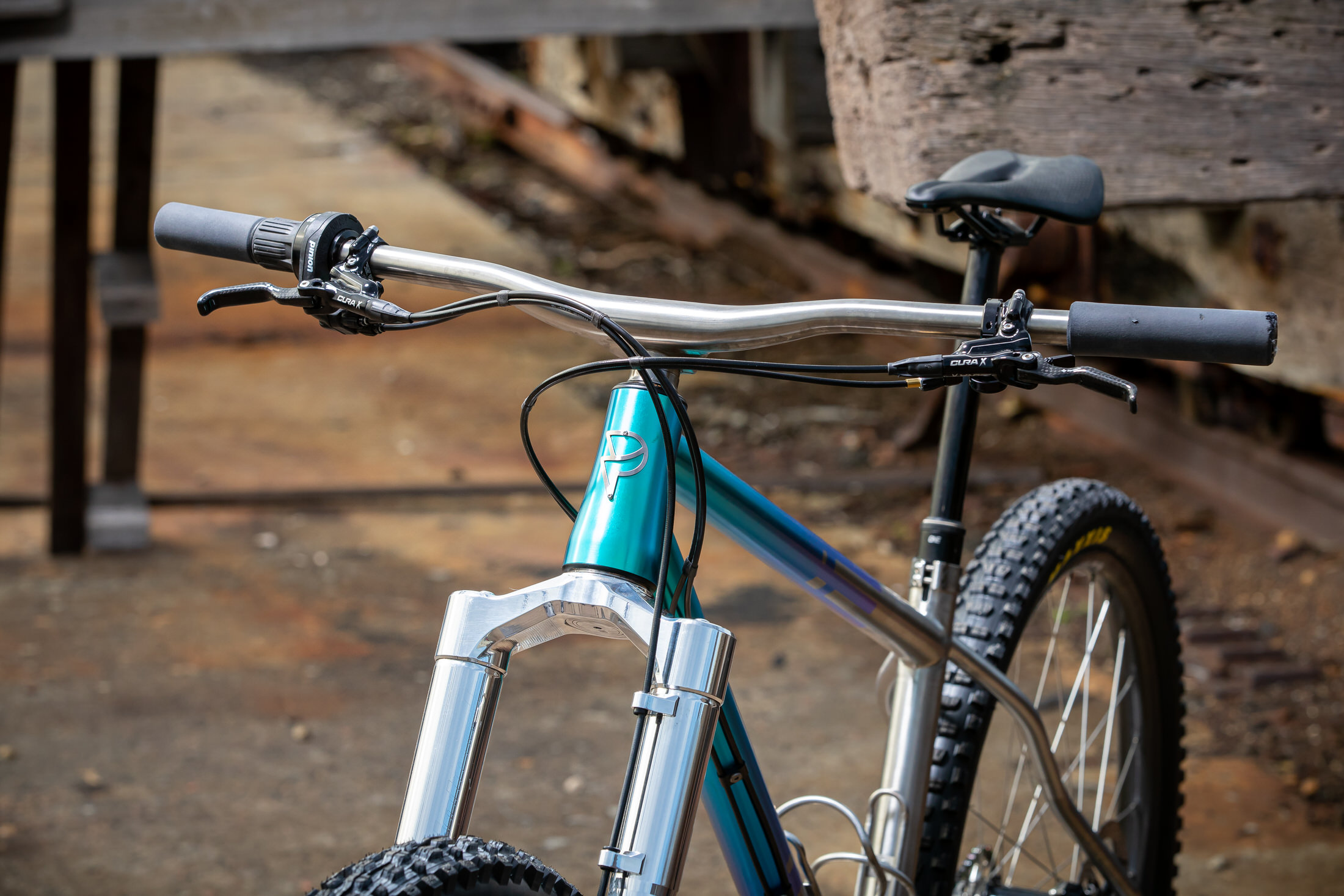
This incarnation of the Ripido is built around a Pinion gearbox and is Mark’s longest mountain bike, using the largest tubes they have built. Why? “just to … try stuff and understand … how the theory applies to how it rides,” he says.
Even the anodising on Mark’s bike had been completely redone by Nine Volt Colour right before the show.
Long bikes still need to be rideable, so certain sensibilities need to be taken into account. In Prova style, he built a one-piece bar-stem (25mm) to maintain a relatively normal head tube angle – yes, also titanium. This masterpiece steers with an Intend Flash fork up front, which has been polished to an inch of its life to match the rest of the bike.
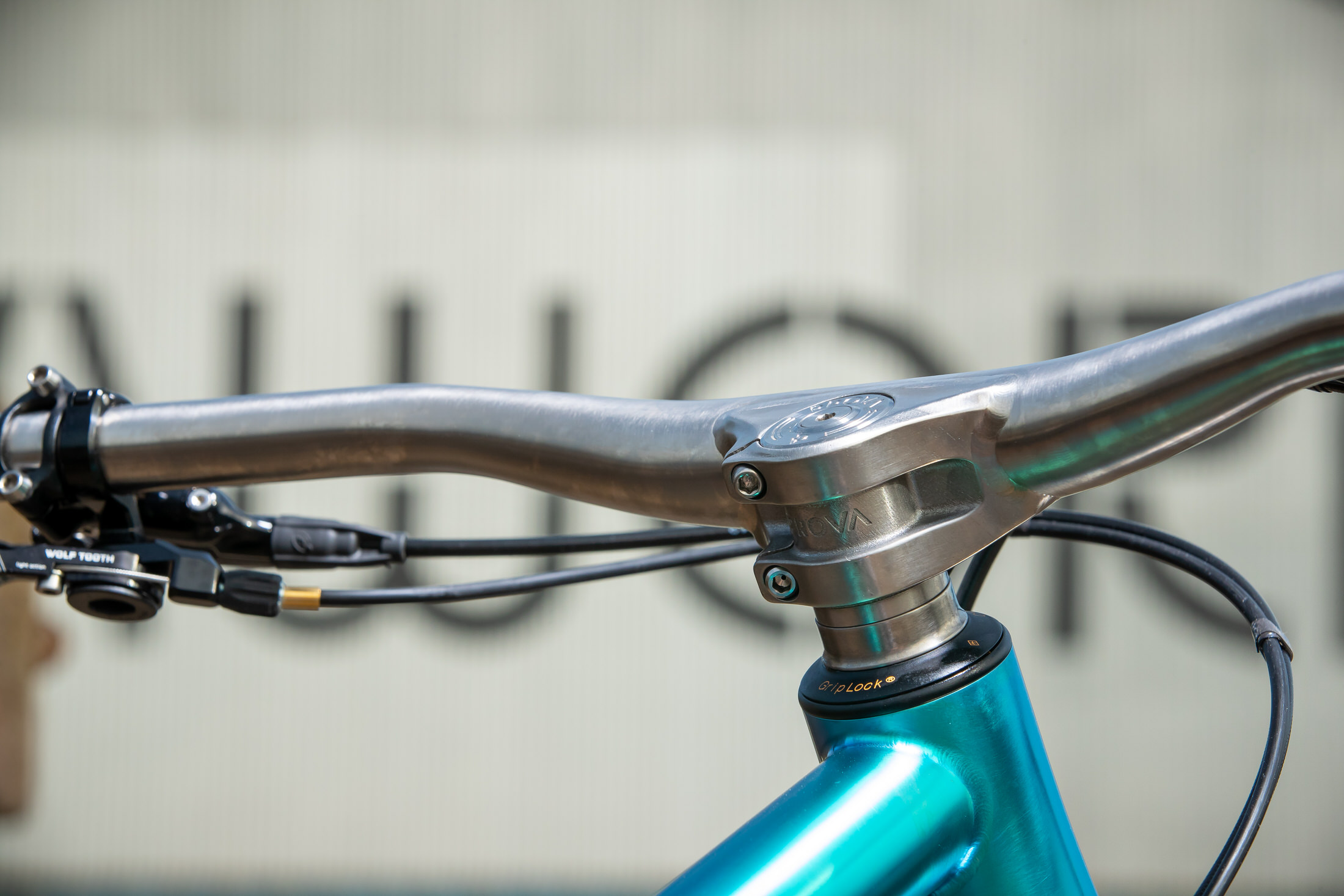
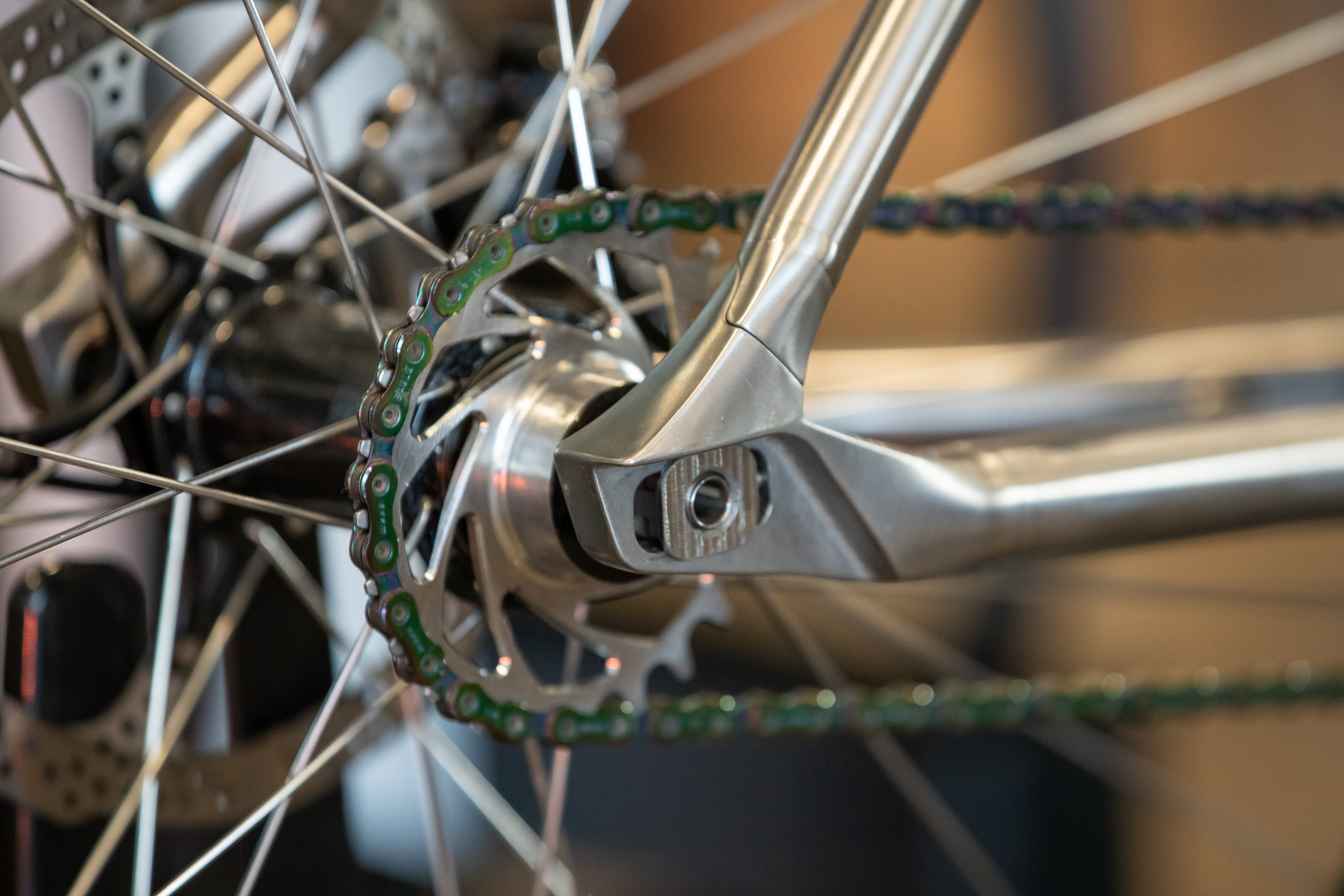
Then we arrive at the most impressive part of this frame – the dropouts. A meticulously crafted solution to the sliding dropout is necessary to maintain chain tension for the gearbox. The majority of sliding dropouts use a lever arm in a channel, requiring you to set the chain tension and lock in the lever arm via multiple bolts on either side, followed by the axle — like the dropouts on The Lost Workshop above. Mark’s design does away with the lever arm, using a grub screw to set tension and the tightening of the axle locks the entire system down.
A closer look at the drive side seat stay will reveal a contoured split for installing a belt drive. In fact, Mark ran this bike as a belt drive, but removed it after experiencing elasticity in the system, which turned out to be from the sprag clutch in the silent Onyx hub.
“I’d have put the belt back on if I had not spent a considerable amount on titanium chainrings,” he laughs.
The Piccolo
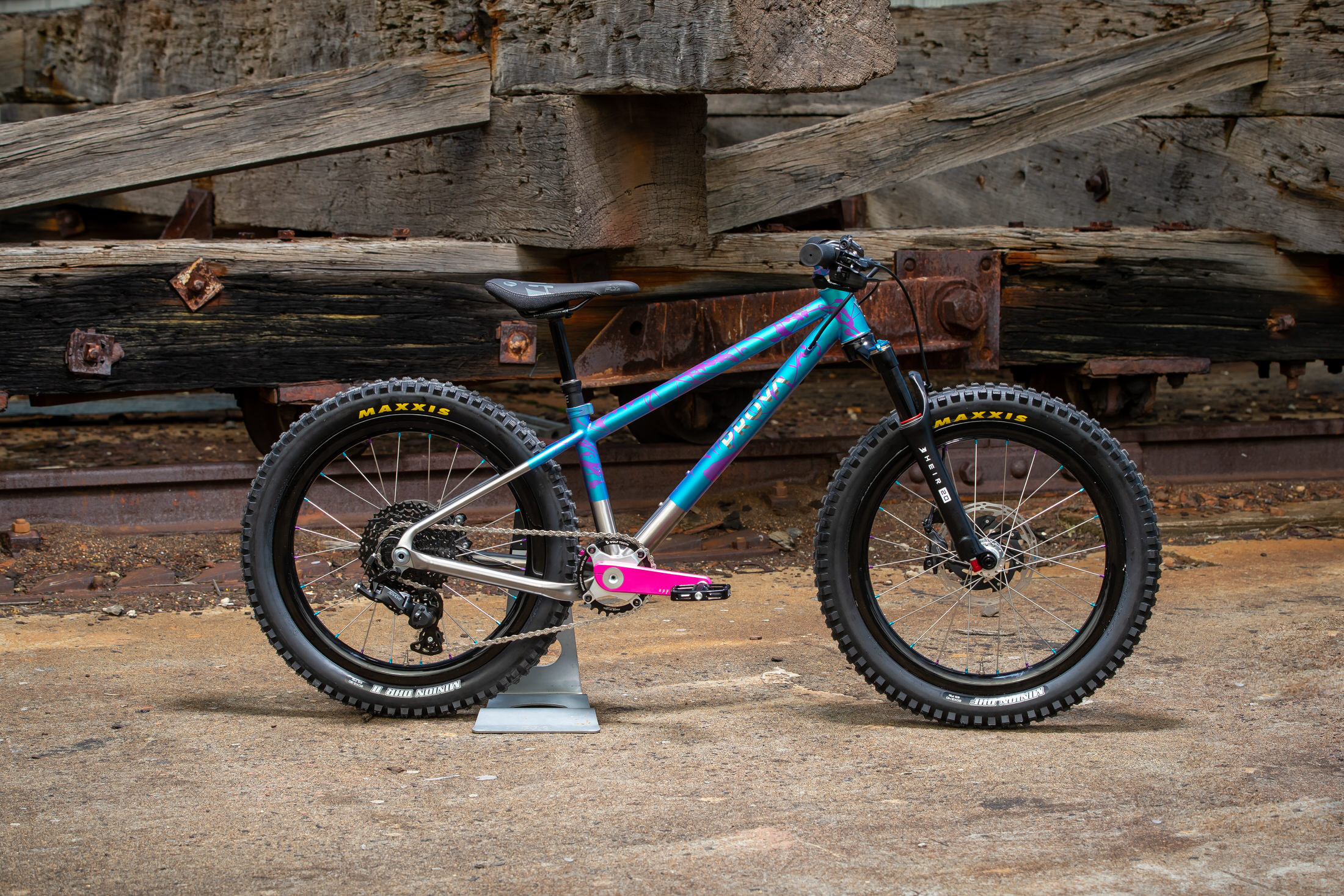
“My niece needed a new bike, so naturally, she gets a Prova,” Mark says.
The Piccolo is a 20-inch kids bike, except it’s exactly the same as an adult’s hardtail, just scaled down. Super lightweight full titanium tubing, 3D printed dropouts, custom miniaturised Ti one-piece bar-stem, child-sized Appleman cranks, Hope pedals, and lock-on grips.
Oh, and a 90mm One-Up dropper post to round out the optimal kids bike package.
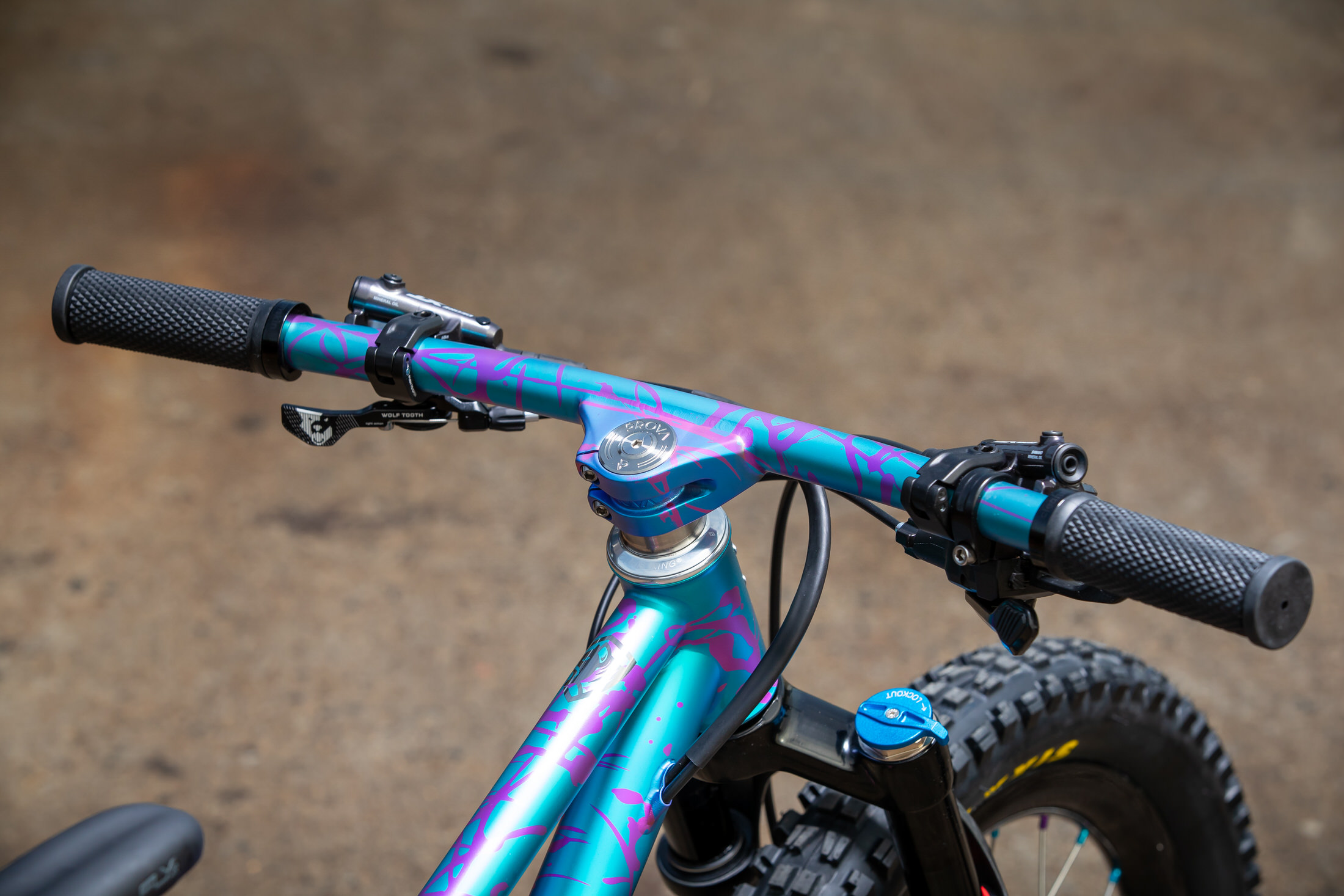
Kelly’s daughter collaborated with Liam from Nine Volt Color on the look of the bike
Nine Volt are a Melbourne-based outfit specialising in titanium anodising. Starting in a garage about five years ago, it can create patterns and wild colour effects based on specific customer requests. The name comes from the voltage of batteries used in the process of anodising titanium.
They tell us the finish itself isn’t particularly hard-wearing. Still, it creates a colour palette and depth that can’t be mimicked by paint or other coatings and can also be removed entirely and re-coated for a completely new look.
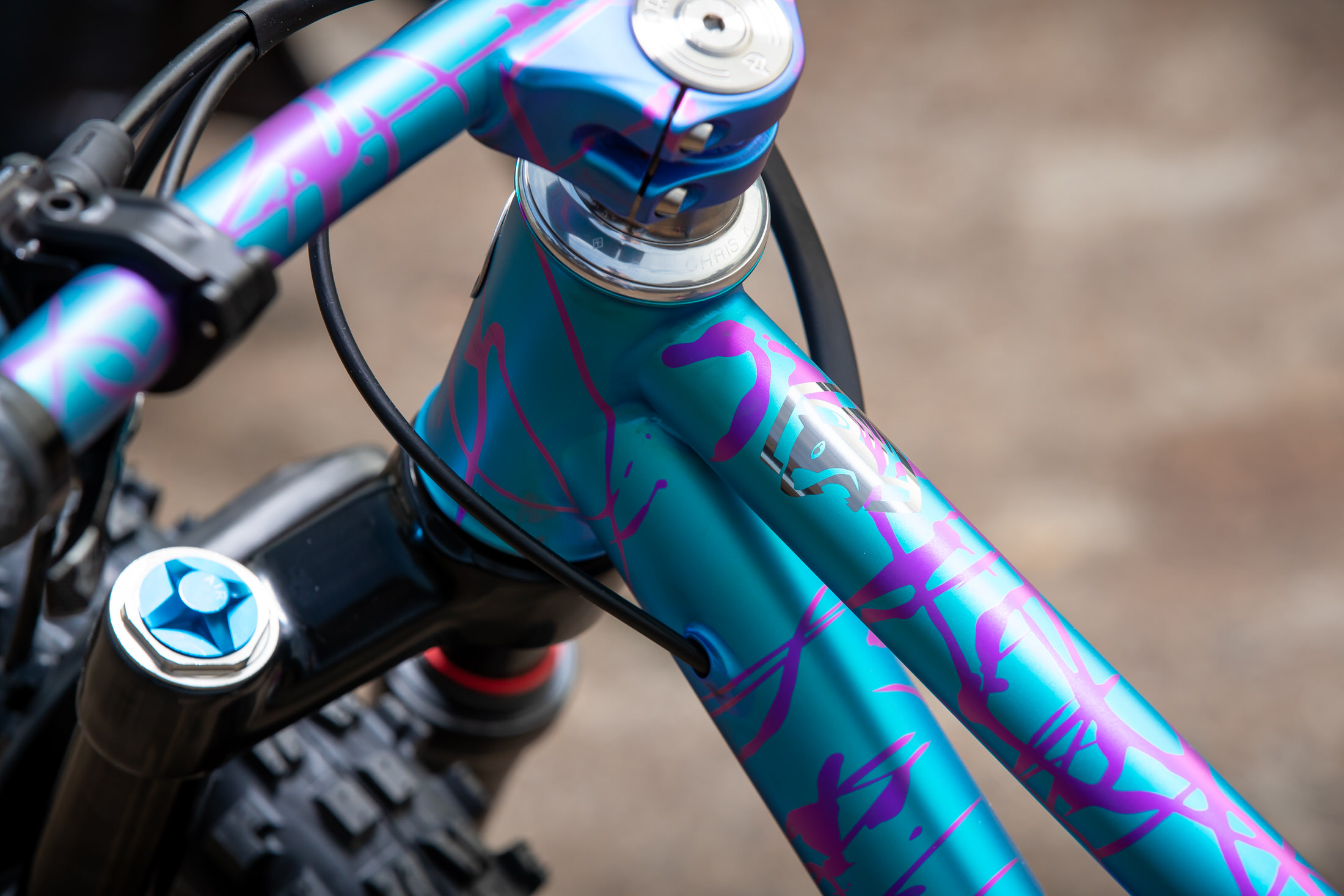
Not only did she have the freedom to choose the colours, but she was even involved in creating the splatter pattern. As a finishing request, Liam applied a Tassy Devil to the top tube.
Woods Bicycle Company
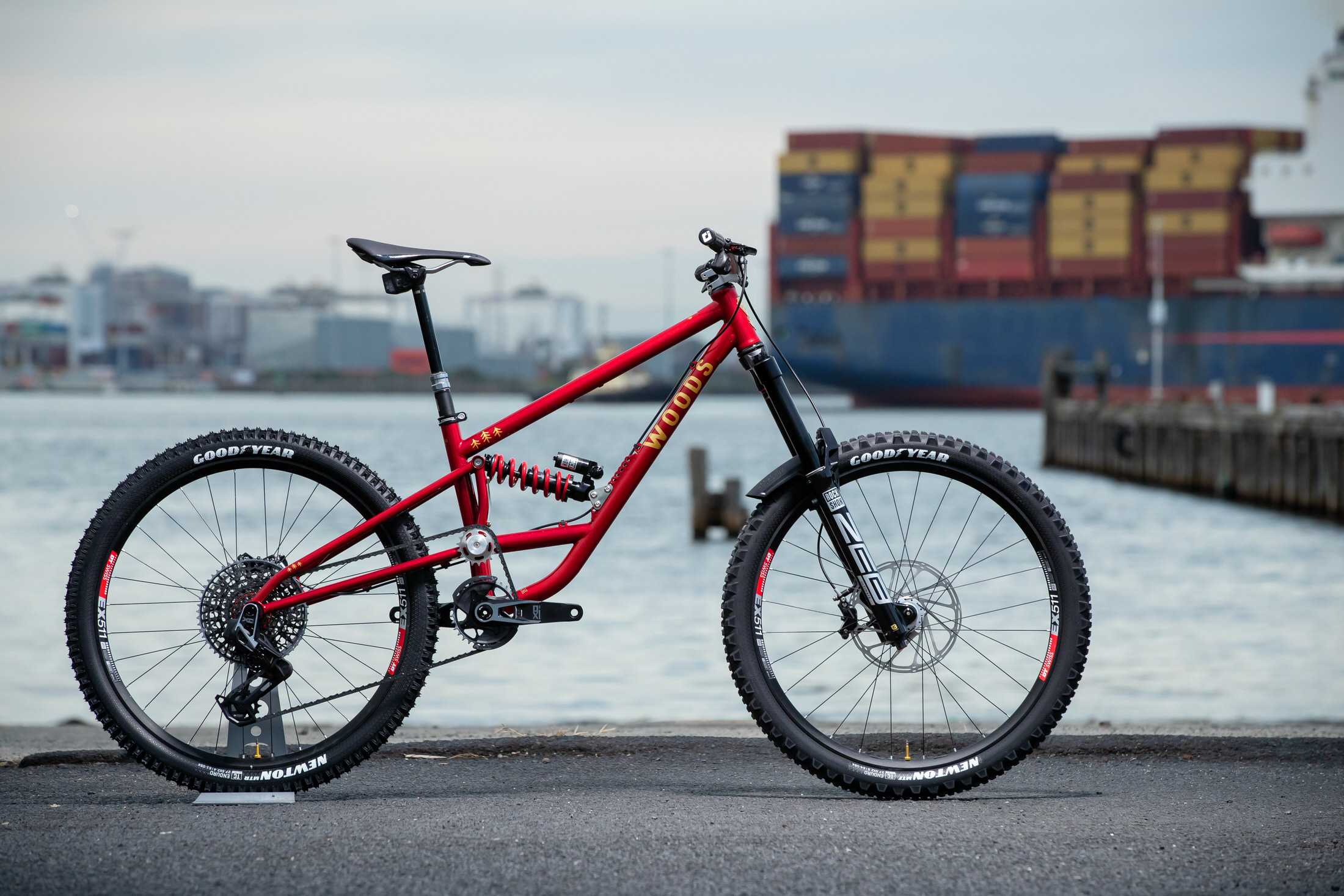
Run by another sibling pair, Woods Bicycle Co is based in Northern NSW. Zac Woods is the fabrication specialist and BMX rider. Meanwhile, his brother Josh Woods takes care of the front-end business, taking orders and customer enquiries and is a road and gravel specialist.
What they’ve brought to the show is Zac’s own El Camino — a BMX inspired dually by Woods Bicycle Company. Like many other builds present at the show, it’s freshly built and itching to be ridden.
Made from TIG-welded American 4130 chromoly tubing, this rig is built to party. Notable appointments are the ProTaper cockpit and 16T steel BMX idler cog.
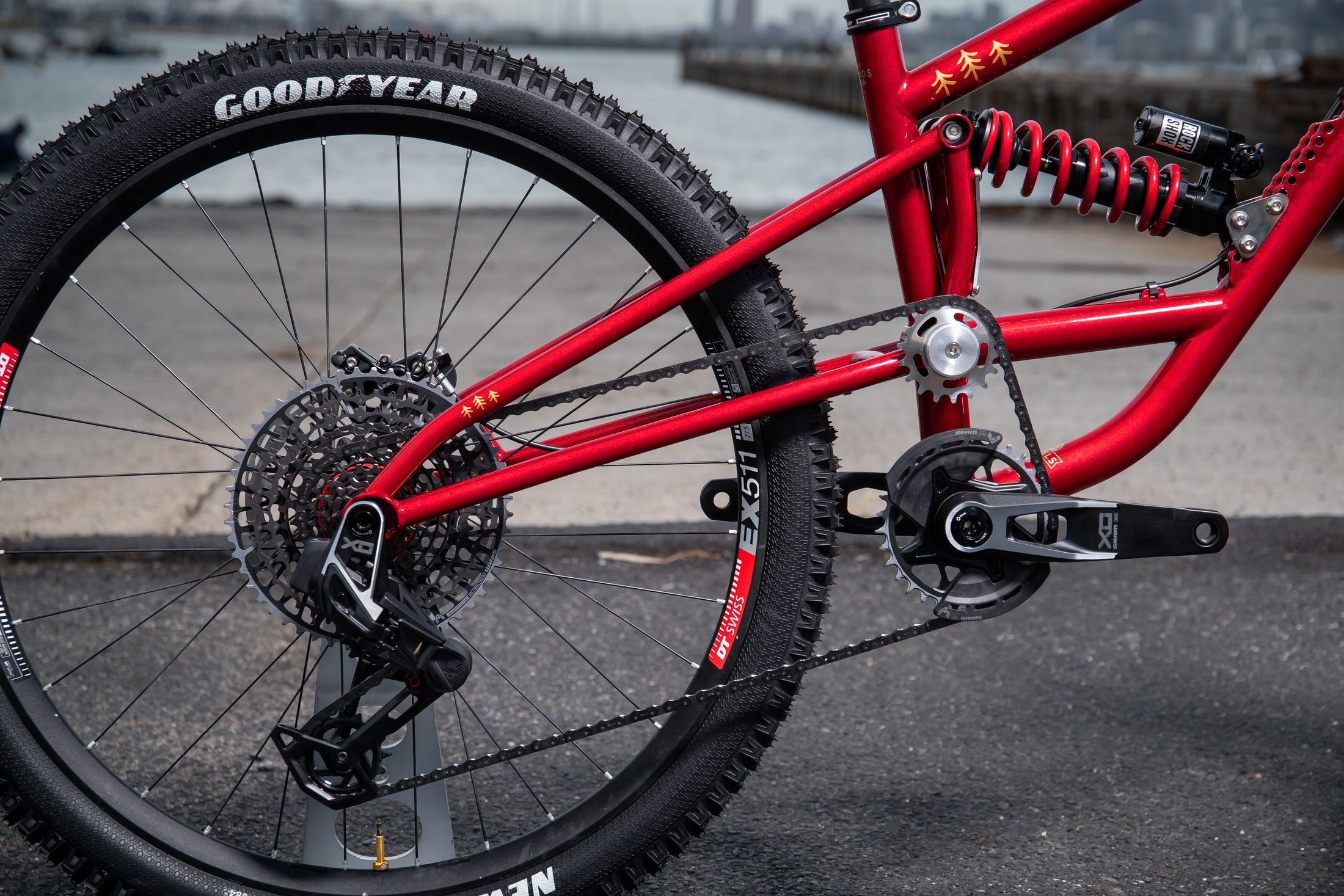
Adapting the UDH transmission posed the biggest challenge to Zac, requiring him to bend the drive-side chromoly stays outboard by 7mm whilst maintaining a symmetrical aesthetic.
The El Camino is designed to be versatile and reliable, and the single pivot design reduces points of failure running just two PF30 bearings. Zac opted for a shorter reach, in effect going down a frame size to maintain agility and a playful nature.
Shock mounting options are aplenty, and the frame is designed to run a 230mm or 250mm shock to provide 160mm and 210mm of travel, respectively.
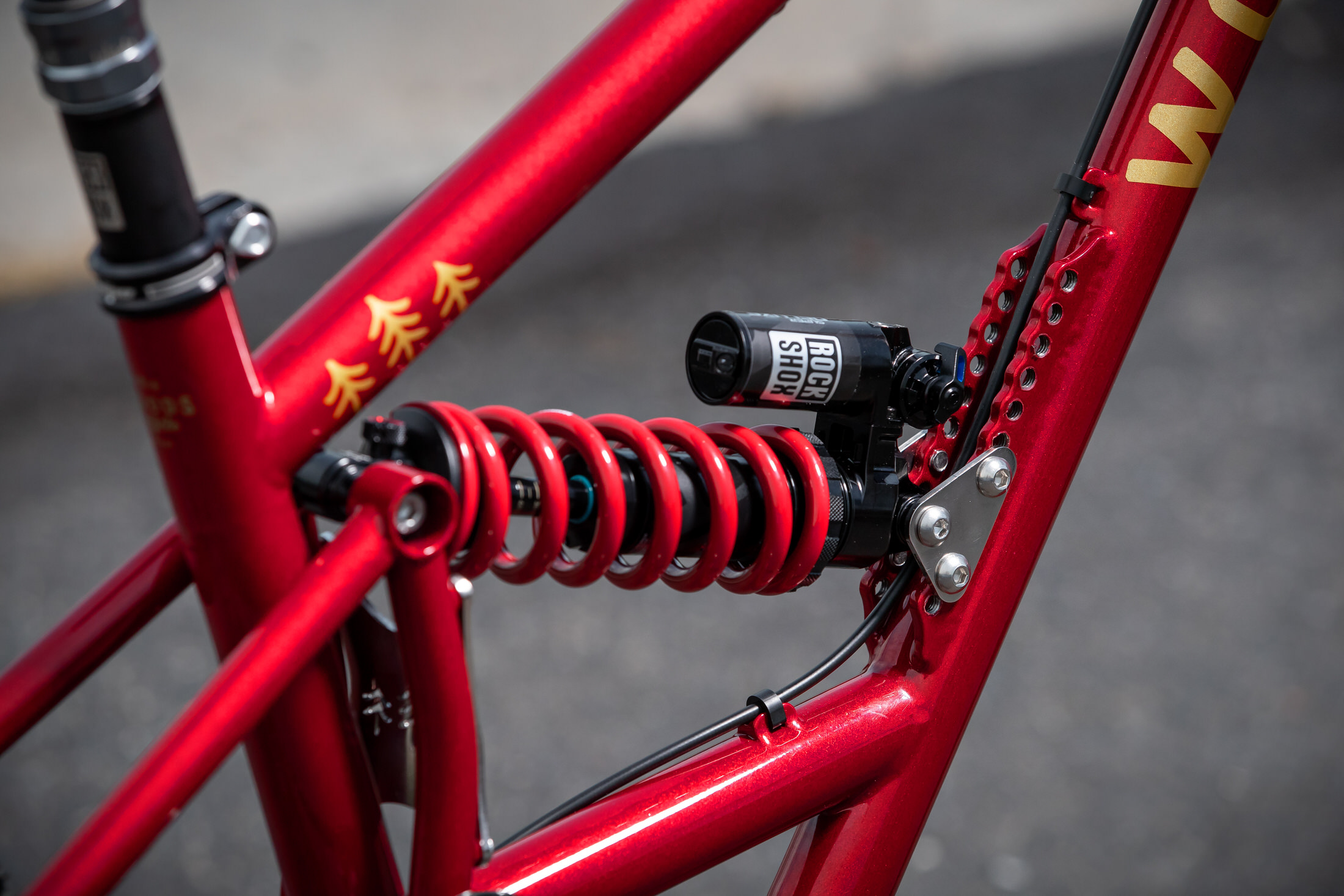
It’s also mullet friendly — by that, we mean 27.5/29 or 26/27.5 — and the idler is designed to accommodate a second cog to run a jack drive setup for a super sweet, single-speed conversion.
Zac claims the frame weighs around 3.9kg, which is pretty impressive given the frame material and extra provisions.
And what that the Handmade Bicycle show wraps up for another year.
Now that you’ve wet your whistles with all kinds of bespoke goodness, we have some great news, Spoken is headed back to the Williamstown Seaworks from June 14-16. Tickets are on sale now, head over to the Spoken website for more details and to get your tickets.
